Before the advent of air fryers, smart ovens, ice machines, and electric kettles, kitchens were stocked with all kinds of useful retro kitchen accessories that were made to last, many of which are just as functional today as they were back then.
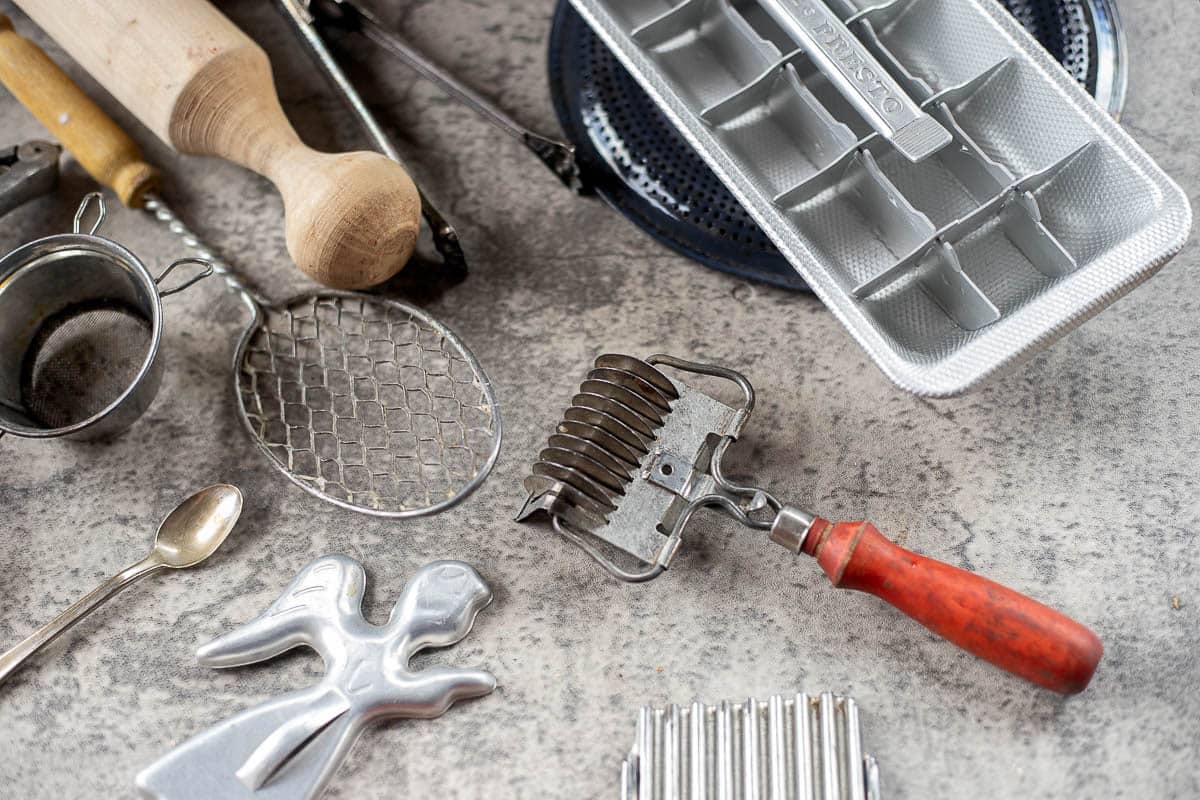
If you love antiquing as much as we do, you may have found yourself drawn to some of the undeniably charming retro kitchen accessories that litter the shelves of just about every antique shop. The kinds that clink, whir, and crank with the satisfying quality of a bygone era.
You may even recall a time when your own kitchen was filled with some of these useful little tools. Perhaps a few were even passed down through the generations, along with cherished family recipes.
The great thing about these handy retro kitchen accessories is that they were built to last, and tend to be just as functional today as they were 50 years ago. That being said, some of these vintage kitchen accessories can be hard to identify, having long since been replaced by more modern alternatives. This guide will help you identify some common items you can still use today!
Pasta Pastry Herb Slicer
This multi-faceted little tool has so many uses! It's great for making homemade pasta, chopping fresh herbs into tiny pieces, and slicing pastry. It's often shaped like a small rolling wheel with a fluted edge and a wooden handle.
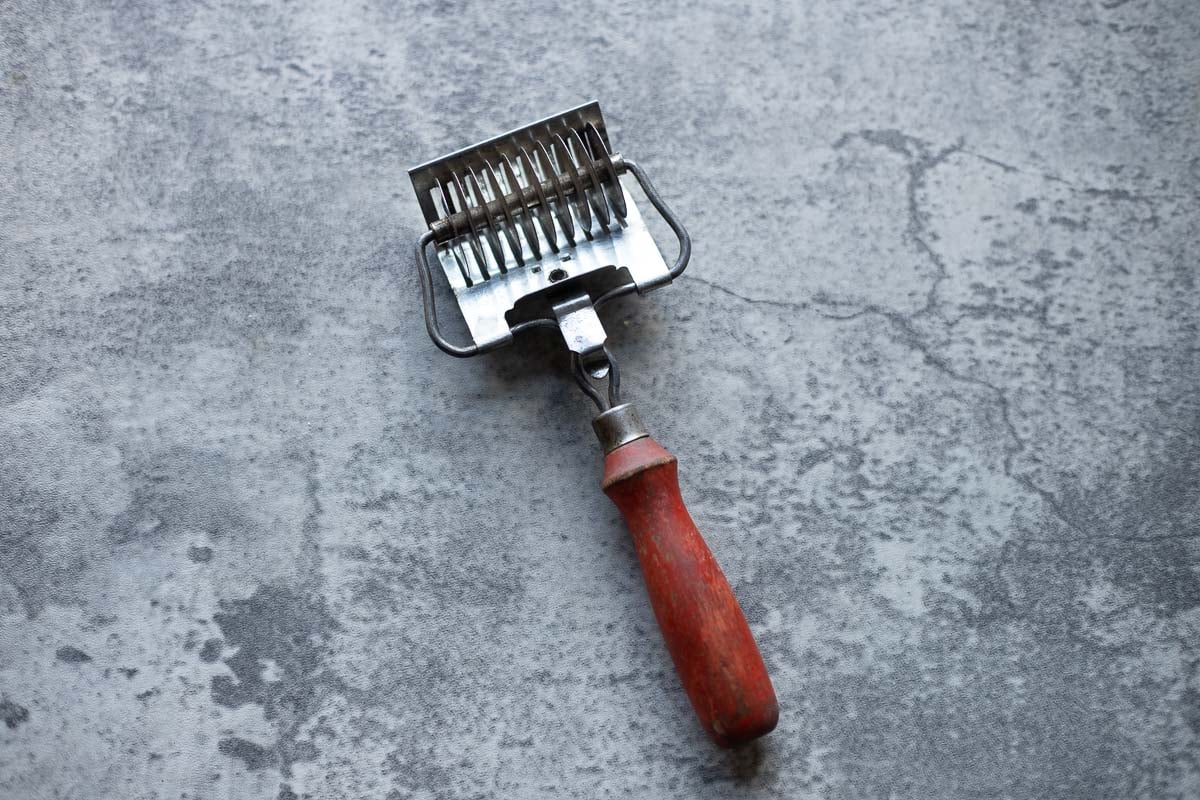
Boomers may remember their mothers or grandmothers using this tool to crimp the edges of homemade ravioli, slice dough for cookies and latticed pie crusts, or chop herbs with a quick, efficient roll.
Wire Spoon Strainer (or Skimmer)
This versatile retro kitchen accessory often resembles a small tennis racket or snowshoe and was designed to serve a multitude of purposes. Wire spoon strainers were once a go-to utensil that could be used to lift pasta from boiling water, skim foam off of homemade broth, or scoop fried foods out of hot oil. It's a simple tool, but it could do the job of both a slotted spoon and a skimmer.
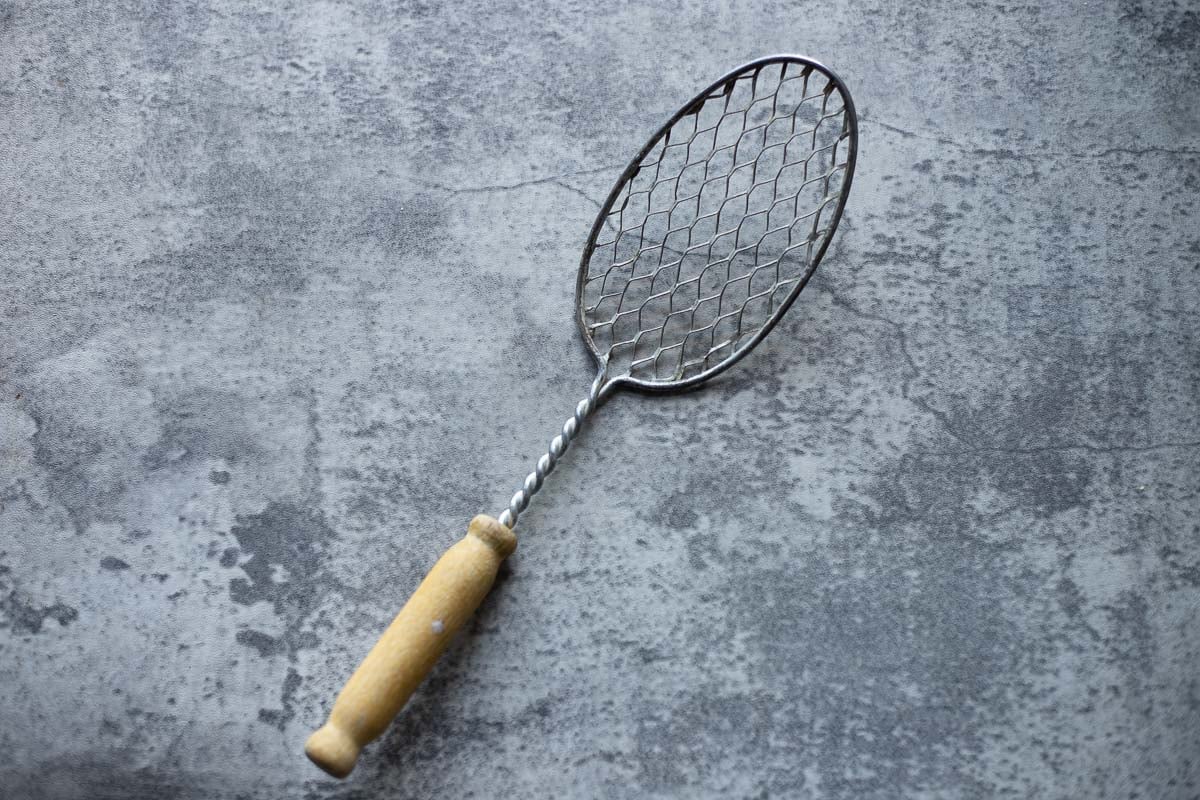
My mom uses hers when making applesauce fritters!
Vintage Toasters
Before pop-up toasters found a home on kitchen countertops, making toast required a bit more effort. Stovetop toasters were designed as far back as the 1880s with a perforated metal base that could be placed directly over a burner and wire frames that held the slices upright to face the heat. The bread would have to be manually flipped, of course, to get an even toast on both sides.
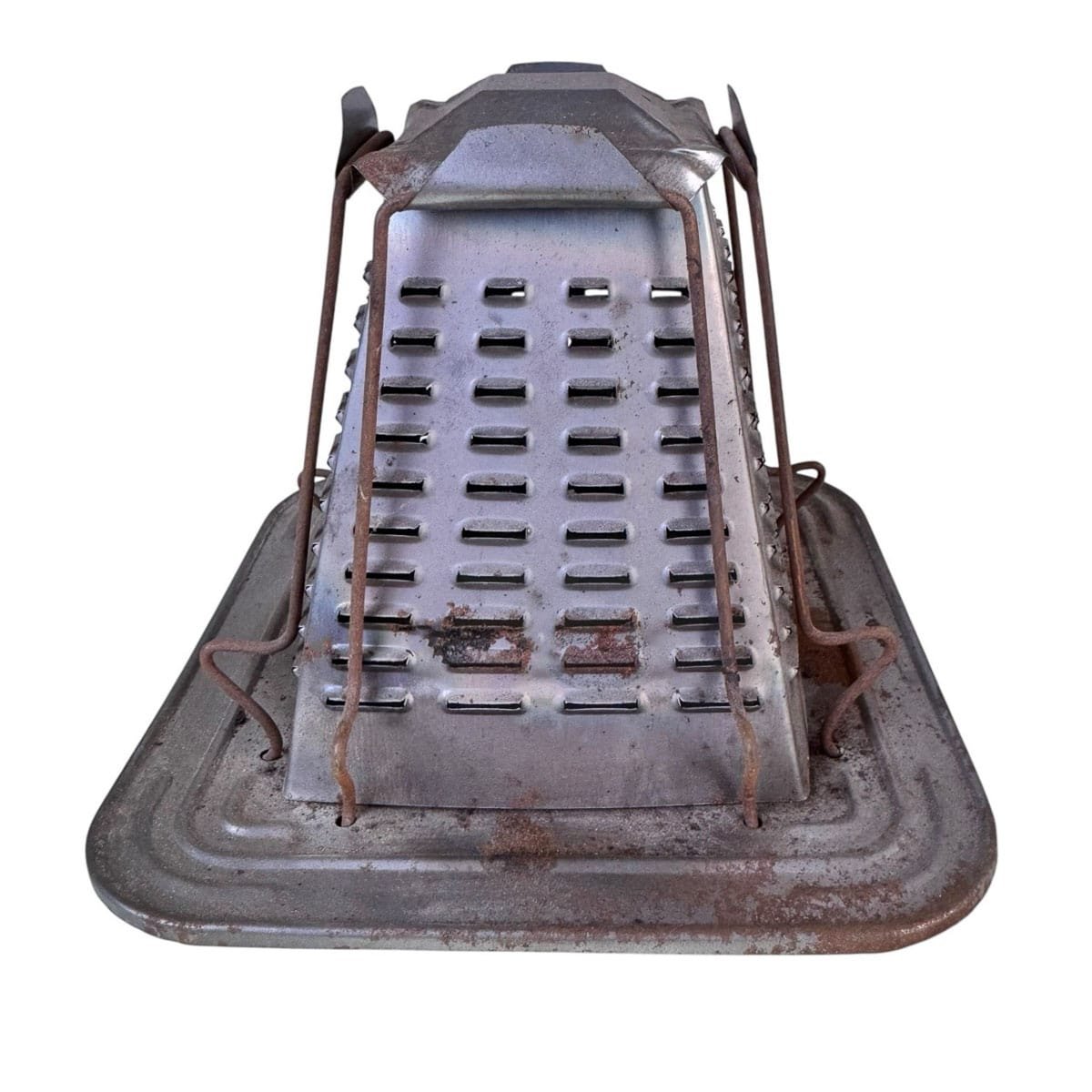
This handy toaster required no electricity and could therefore be used on camping trips, which is why it's sometimes referred to as a "campfire toaster".
By the 1930s and 40s, electric toasters became more commonplace, like this Son-Chief Toaster 1930 Art Deco toaster. It toasts one side of the bread at a time, making it necessary to flip the toast manually to toast the other side.
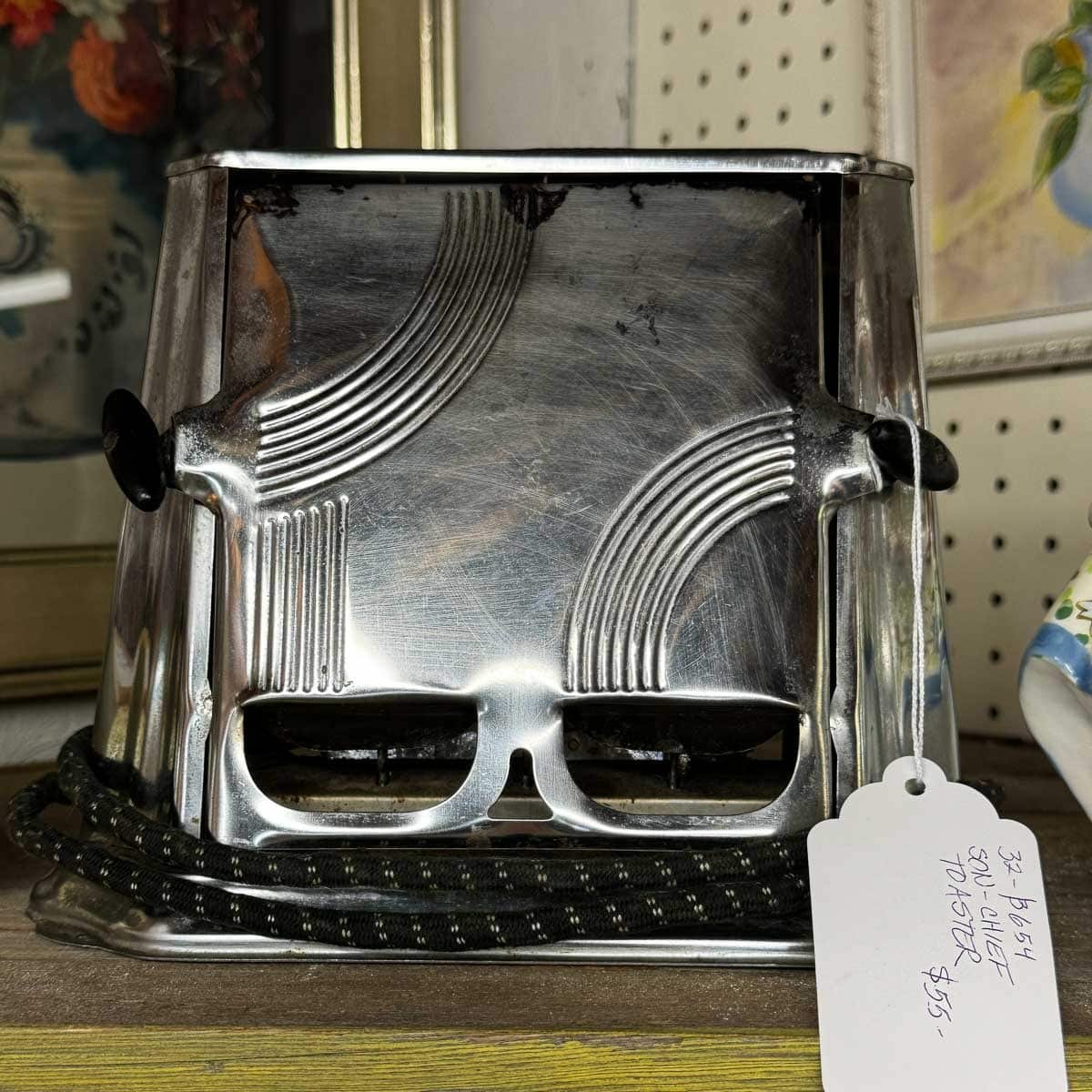
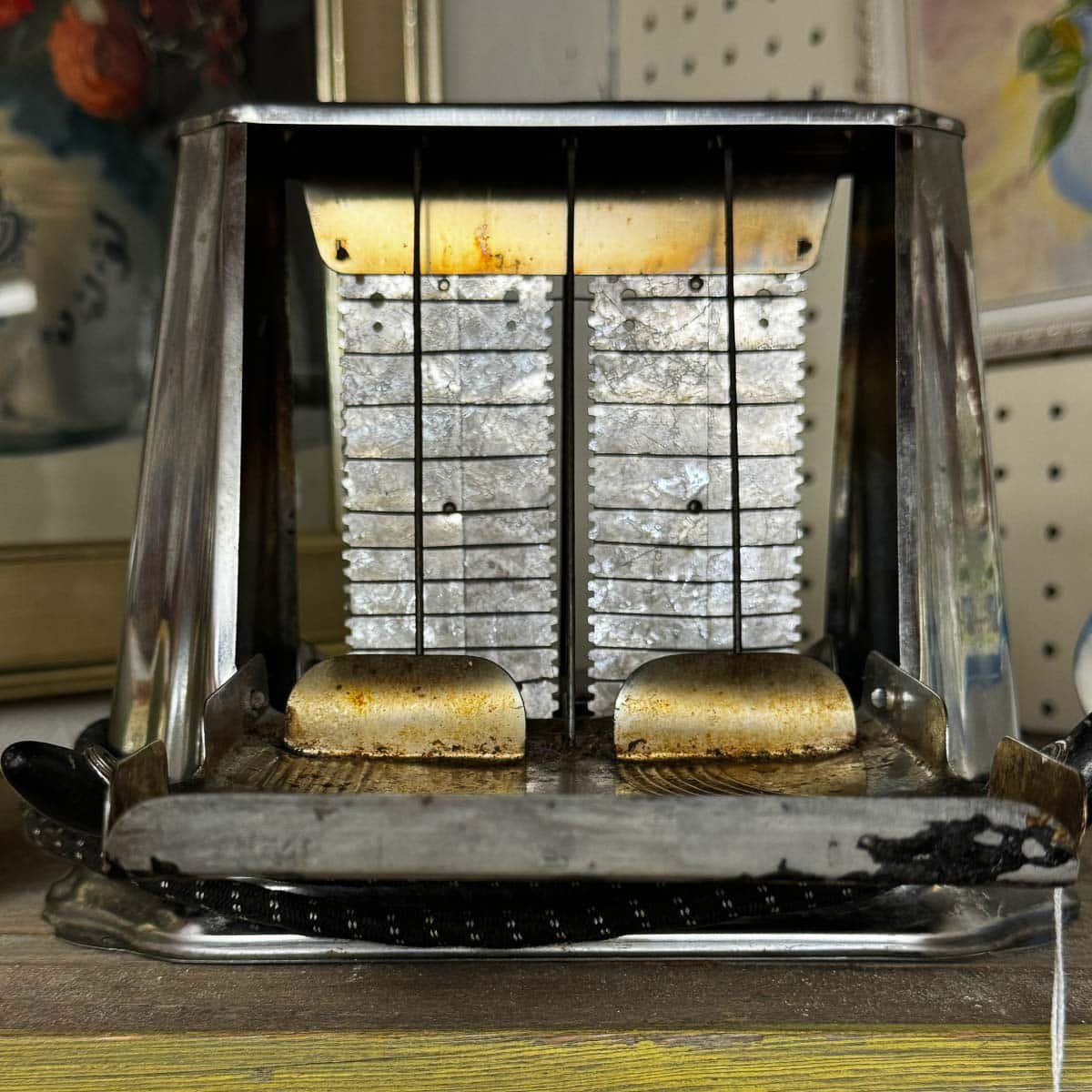
French-Style Bean Slicer
These hand-cranked bean slicers are a great example of mid-century ingenuity, designed to streamline the prep process before freezing, pickling, or cooking green beans. This would have been a common task in a time when home gardens and canning were a way of life.
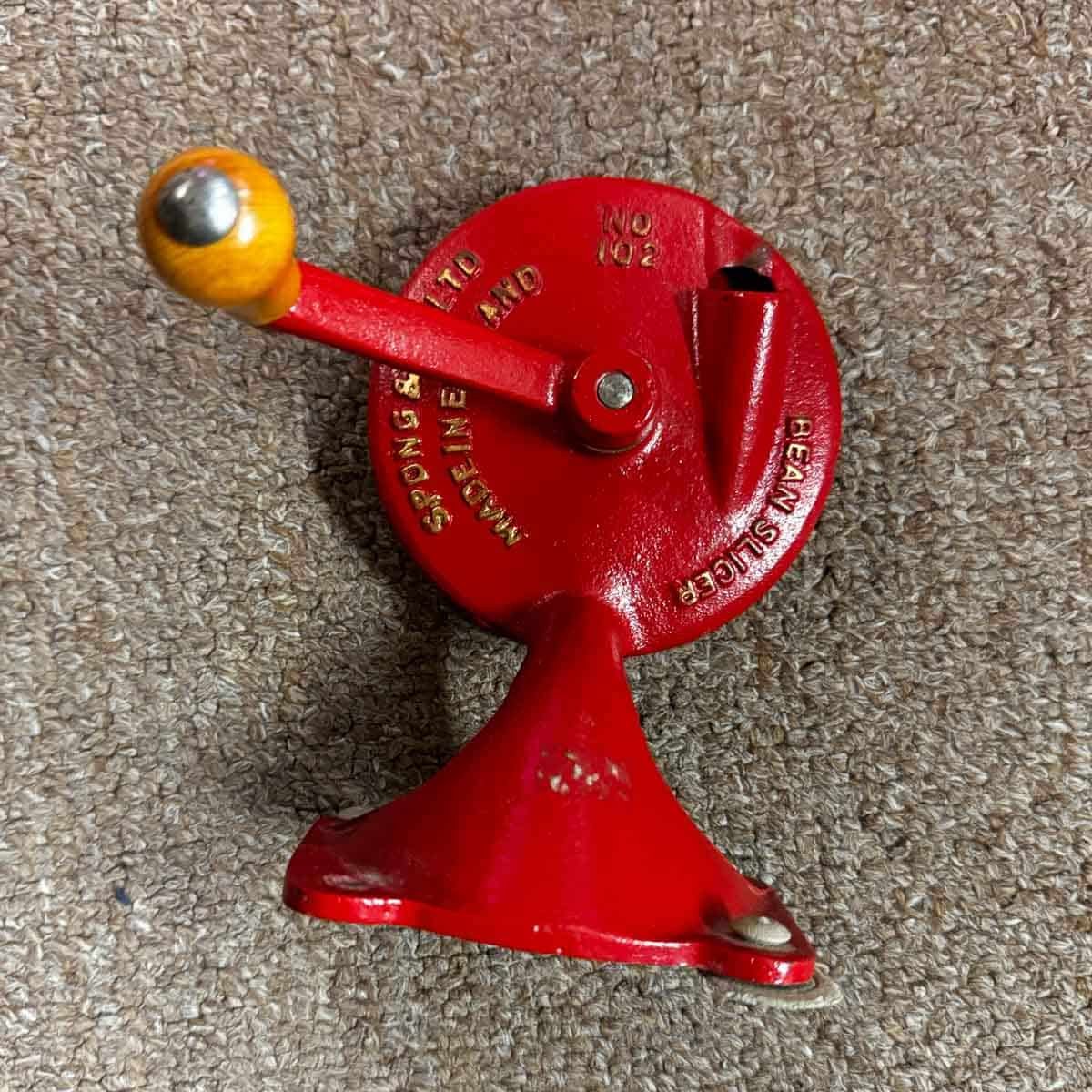
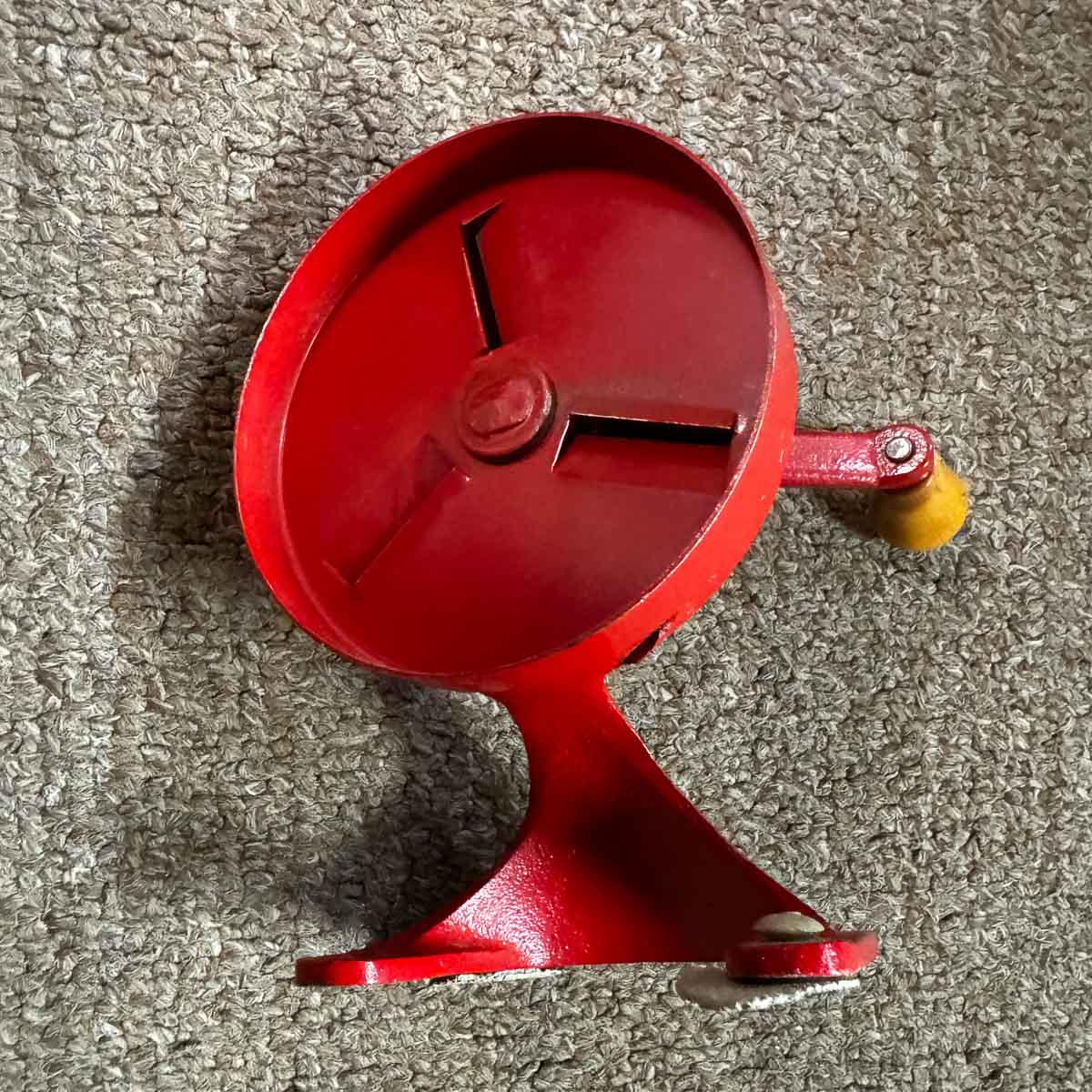
You'd feed whole string beans into the chute, or sometimes two chutes, depending on the model. These bean slicers could clamp onto the edge of a counter or table for stabilization, while cranking the handle would cause the internal blades to rotate, creating neat, even slices.
If only we'd had one growing up to use when making fasolia (green bean stew)!
Nut Choppers
These vintage hand-crank nut choppers, sometimes called "nut grinders", were staples in mid-century kitchens, especially for those who loved to bake! I use mine when making baklawa!
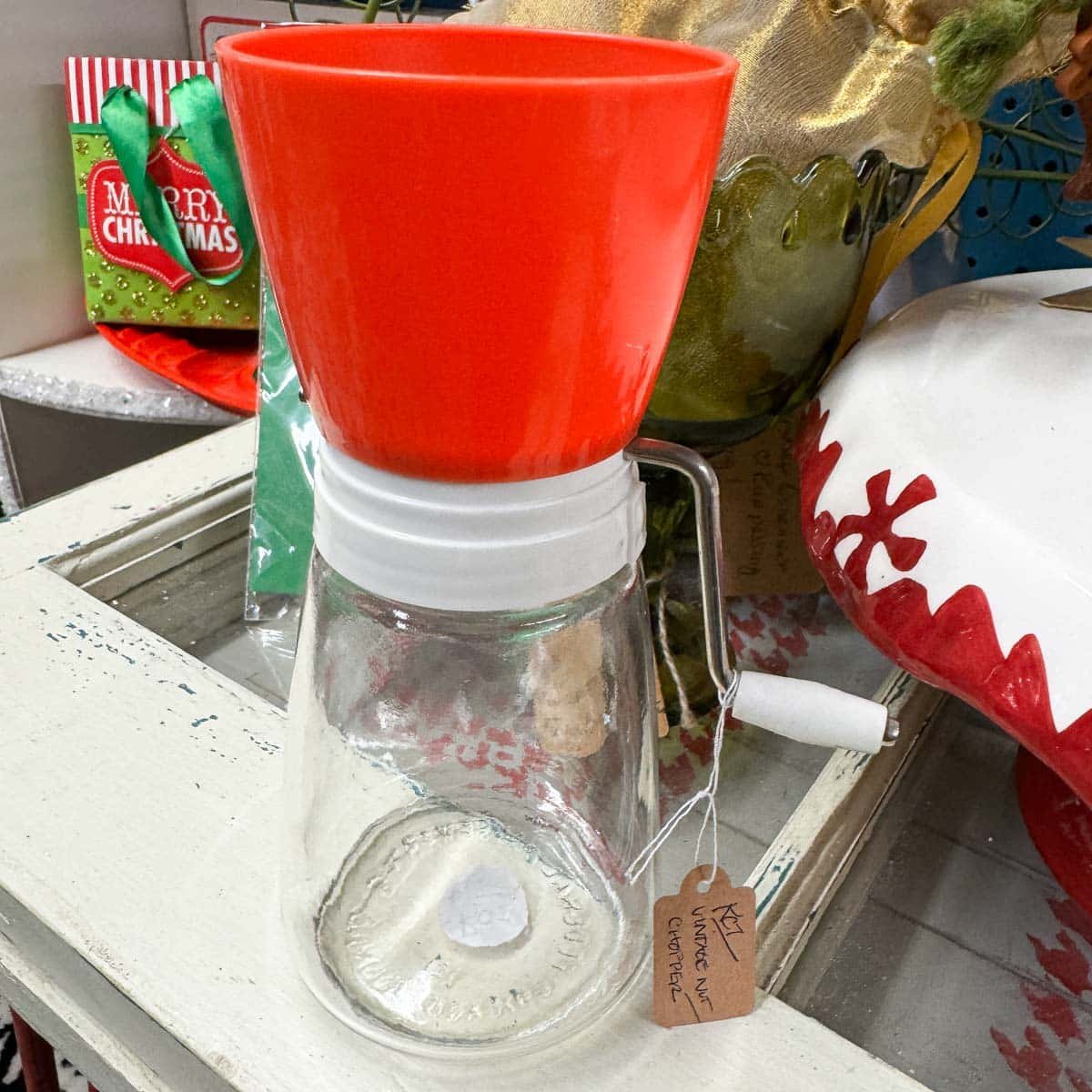
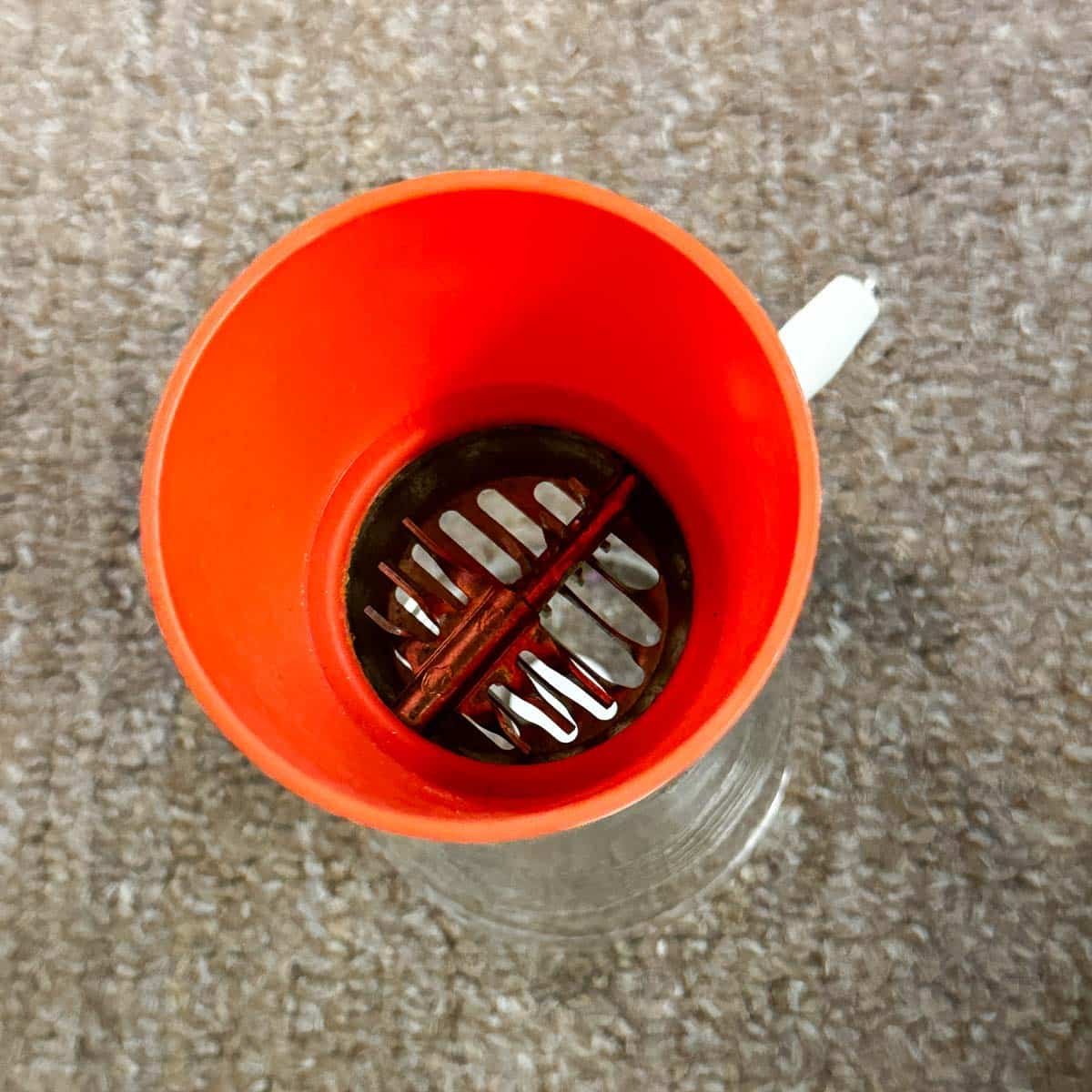
You could use these devices to chop walnuts, pecans, almonds, and other nuts into fine or coarse pieces for use in cookies, cakes, bread, salads, and more!
Just fill the basket on top with nuts, then crank the handle, rotating the internal grater disc (or blades), which then collects the ground nuts in the glass jar below. The jar often served as a measuring cup as well.
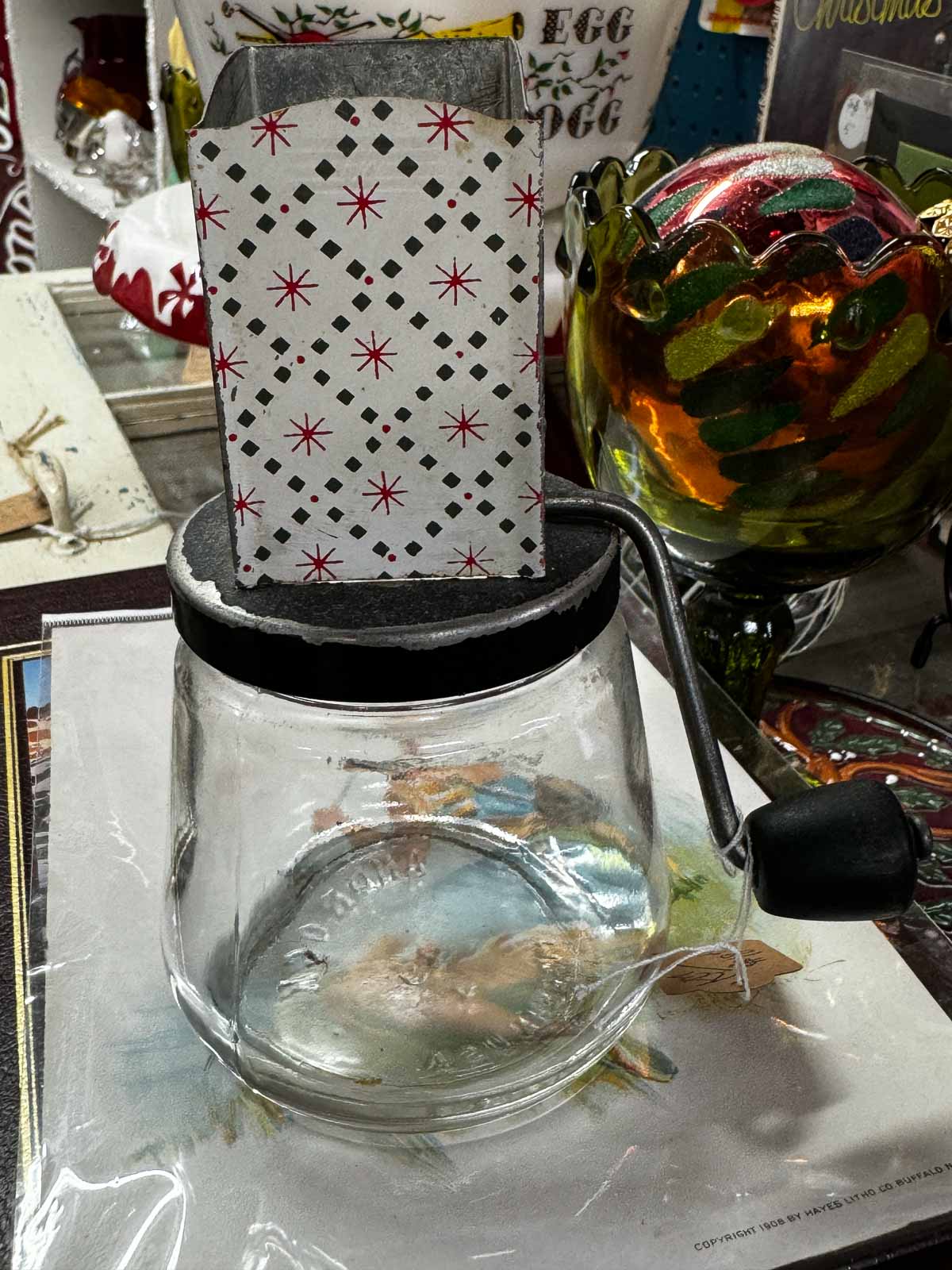
Donut Makers
Hand-held donut makers like this one were a popular kitchen tool in the 1940s-60s. It offered a cleaner, faster way to quickly shape donuts without the need for rolling, cutting, or getting covered in dough.
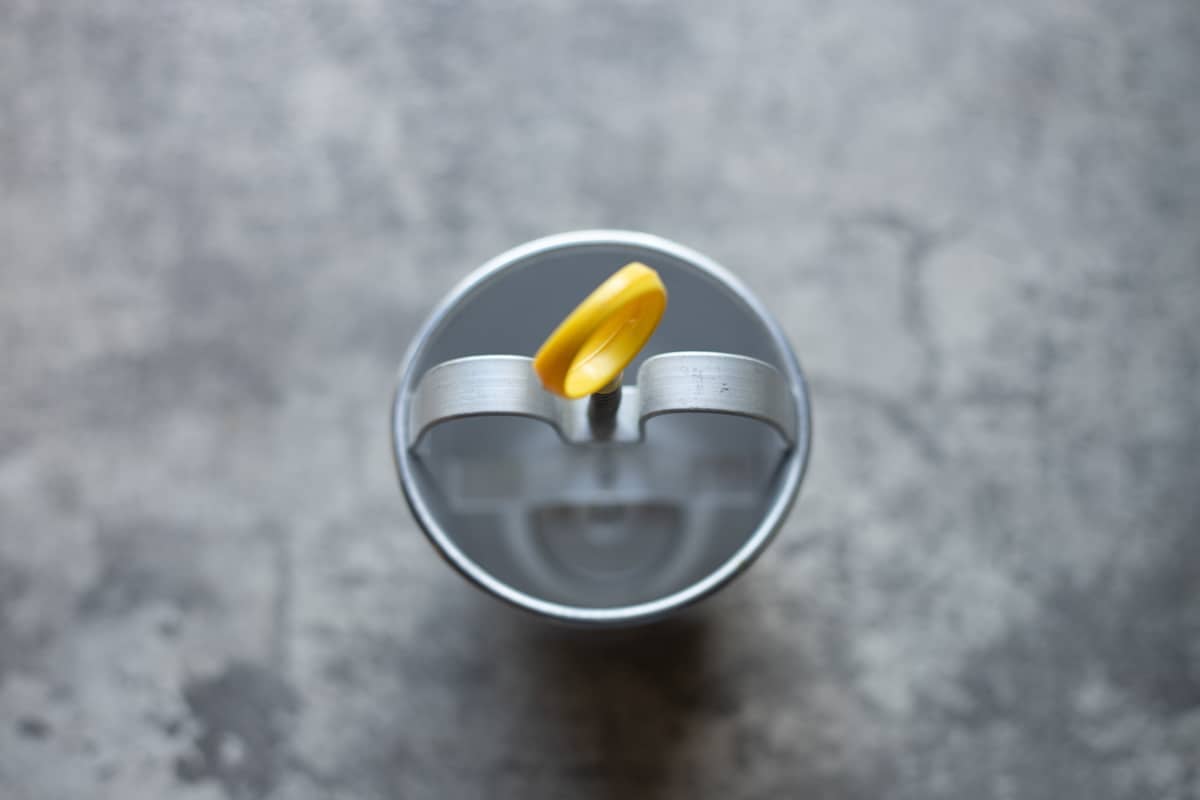
The metal cylinder was filled with donut batter (usually cake-style batter, rather than yeast dough), and the batter would be dispensed through the bottom of the device, directly into the hot oil.
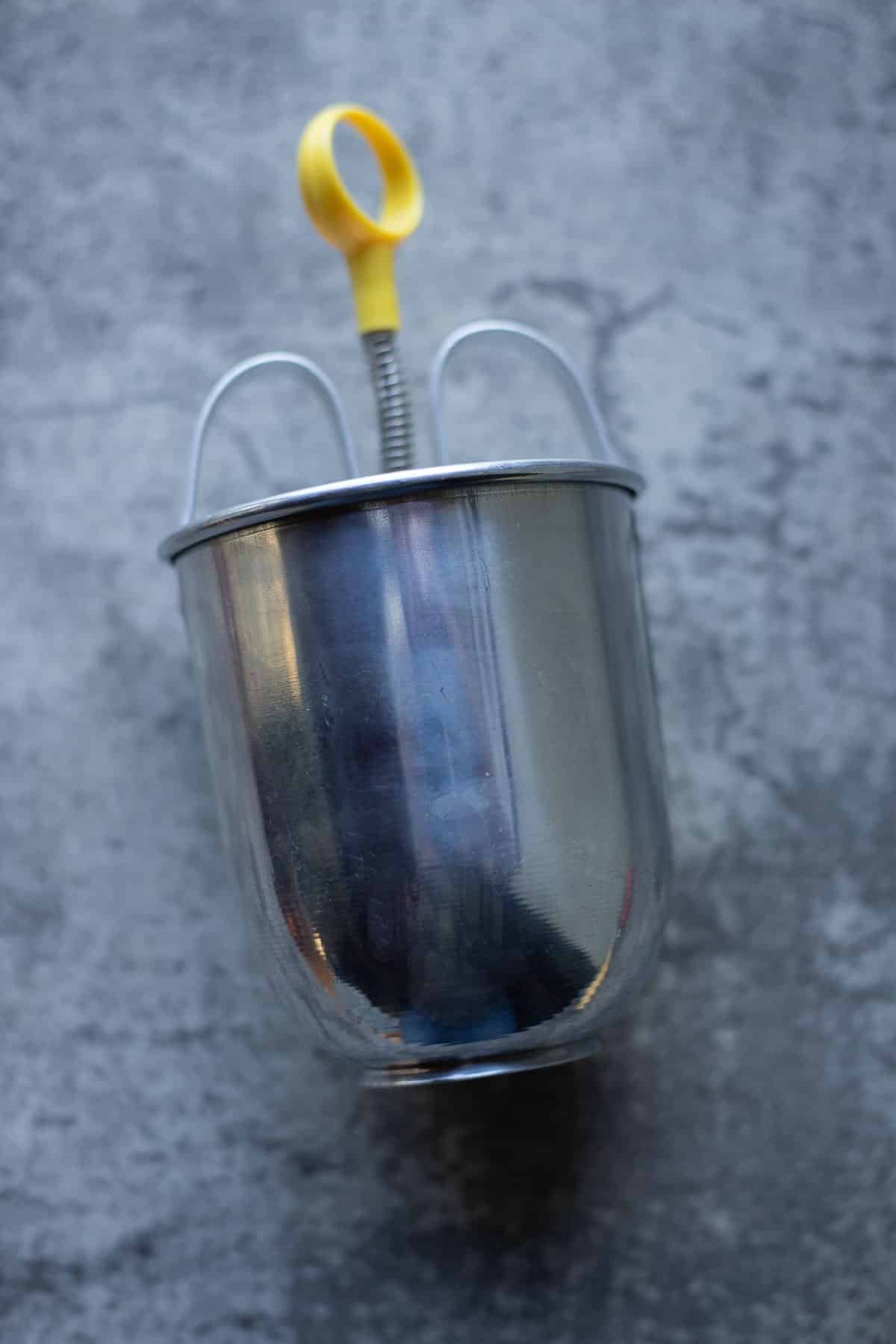
Pushing the handle (the yellow ring on top) would deploy the spring-loaded central plunger, which ensured that the dough was dispensed in the form of a perfectly shaped ring, creating a classic donut shape.
Aluminum Ice Cube Tray
While ice cube trays are certainly less commonplace in a time where most refrigerators have built-in ice machines, many of us still rely on them to make our ice "the old-fashioned way". This might not feel like such a chore, however, if we still made ice trays as sleek, sanitary, and functional as this one. It might not look like much, but these aluminum ice trays were far superior to our modern ones.
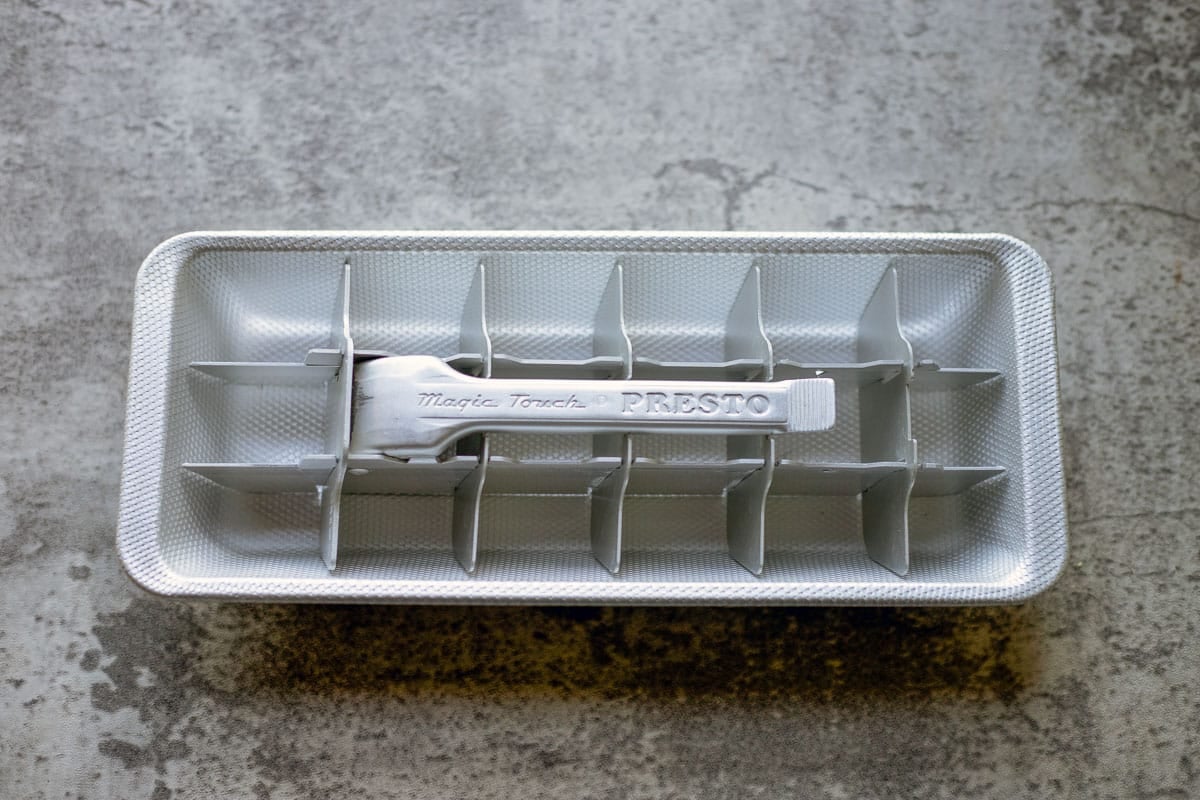
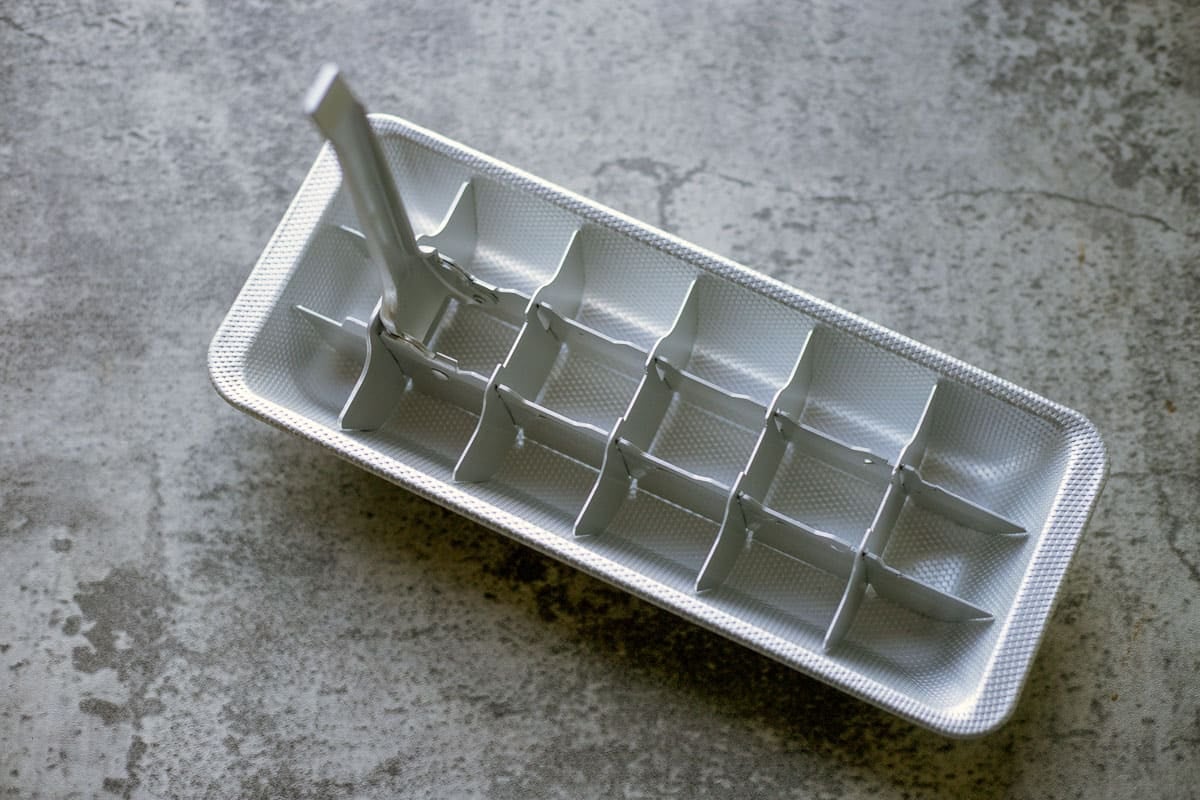
The genius lies in their design: aluminum is an excellent thermal conductor, allowing it to freeze water much faster than other materials like plastic or silicone. The handle, when lifted, would release the inner separator grid, which would gently break the individual ice cubes free for easy collection. No need to twist, crack, or fight with the tray in order to fish the ice cubes out!
Silent Butler
The silent butler is a charming and somewhat forgotten relic of the 19th and 20th centuries. Also known as a "crumb catcher" or "ash receiver", this small container served as a more elegant precursor to our modern dustpans.
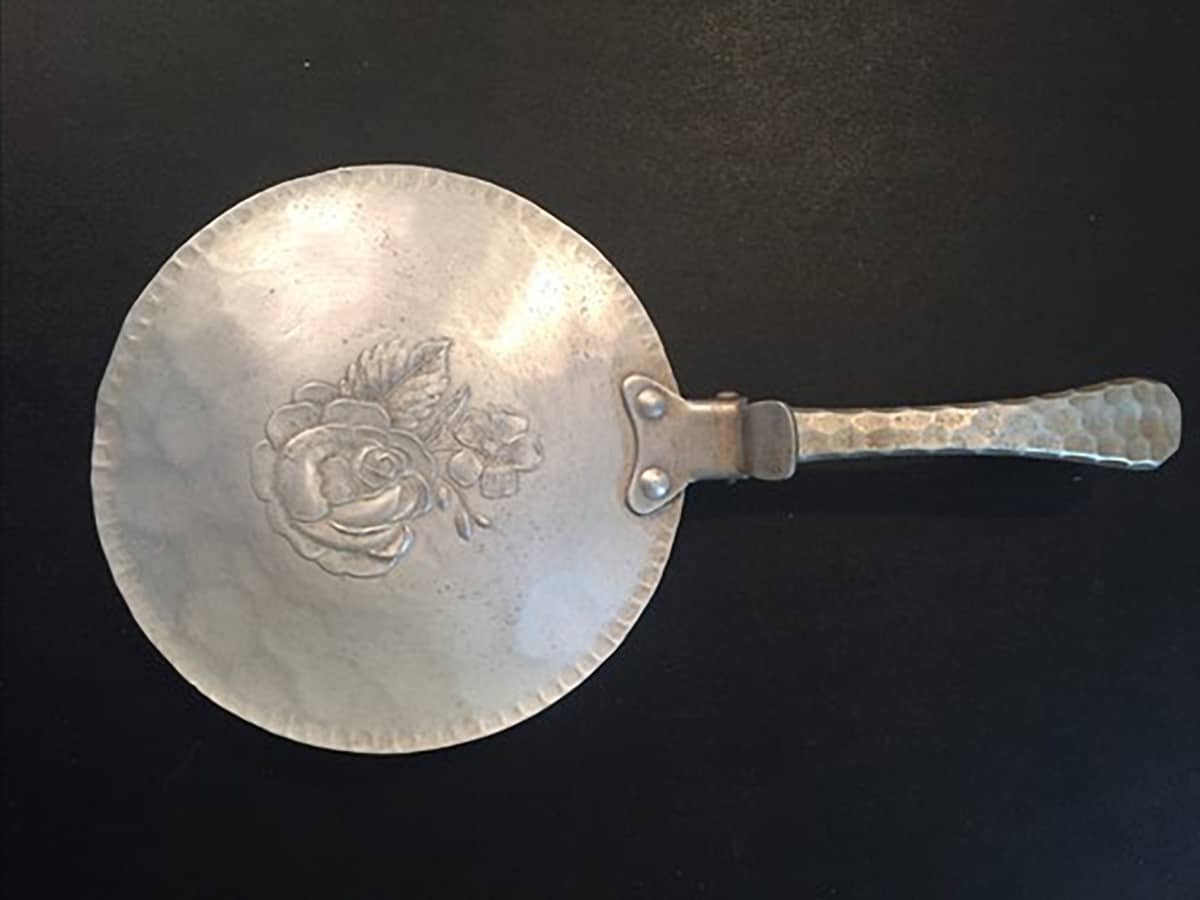
Would you like to save this recipe?
This handheld tool was used to quietly and discreetly collect table crumbs, ash from smoking, and small bits of trash such as matchsticks, nutshells, etc. A small brush was often kept inside for sweeping up debris, and the hinged lid ensured nothing would get out.
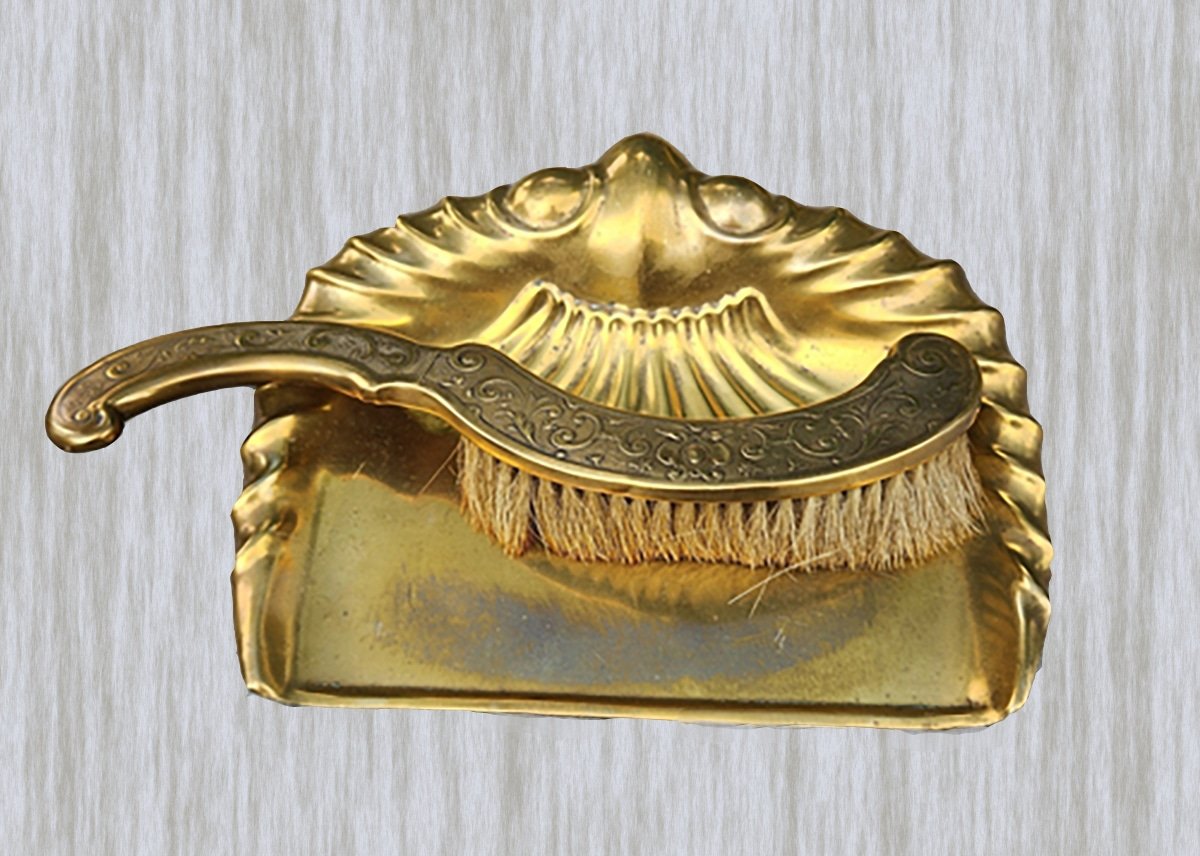
These were particularly popular during the Victorian era through the 1950s, and were named for the fact that they allowed hosts or servants to quietly clean up without disrupting conversation.
Manual Coffee Grinders
Vintage coffee grinders, or "coffee mills", tell an interesting tale of how people around the world once brewed their morning cup. While modern coffee makers offer convenience, we've lost the hands-on art of the coffee-making ritual.
Some still find grinding roasted coffee beans by hand to be a satisfying part of the brewing process, and one which often results in better flavor, especially when using burr grinders, which crush the beans between a fixed wheel and a rotating one, rather than grinding them with a blade. See my post on how to make an iced Americano to learn more!
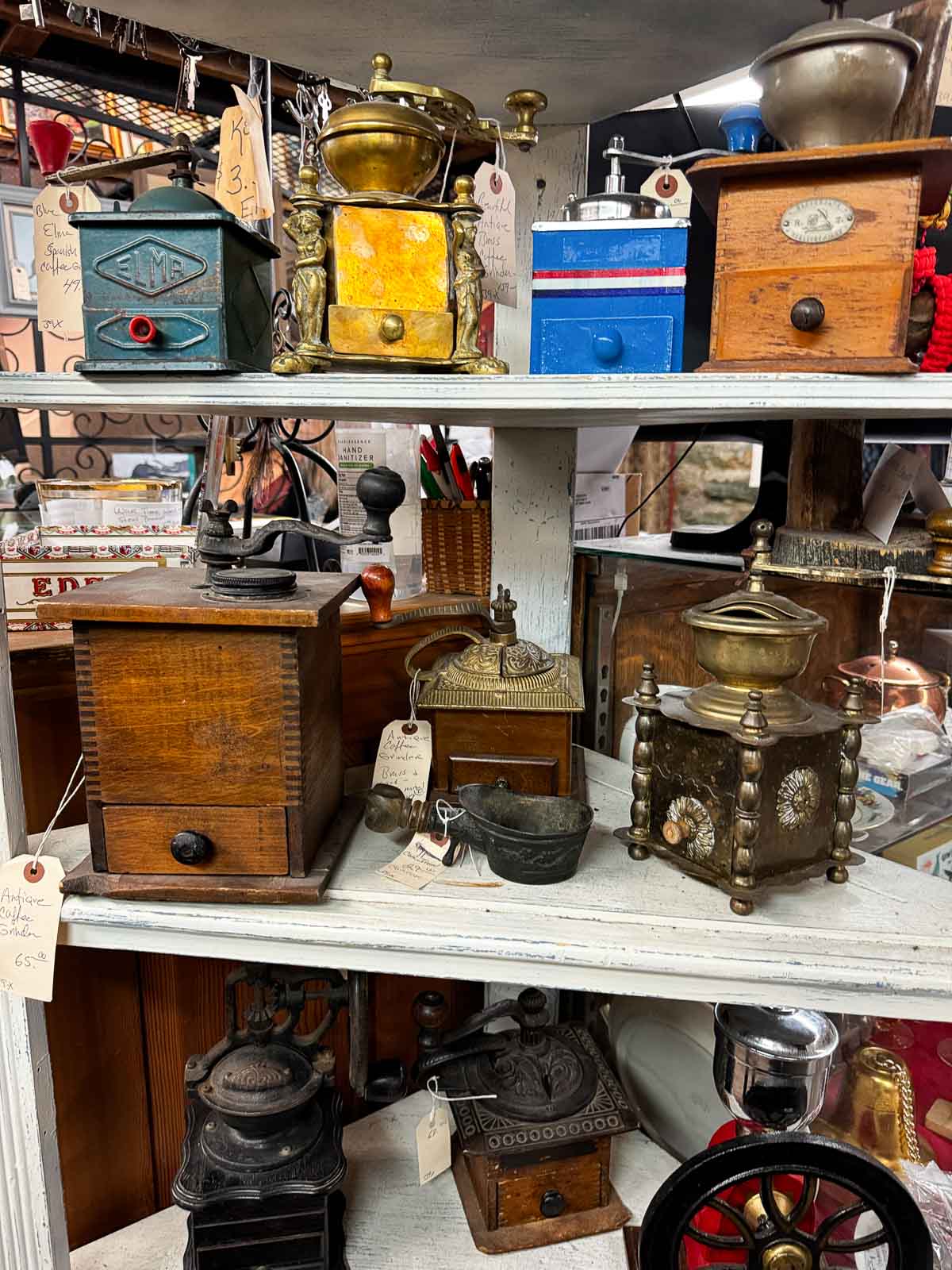
Simple box grinders, like most of the ones pictured, were popular in Europe and the Americas. In contrast, ornately decorative brass grinders were more widely used in the Middle East and Mediterranean regions. Wall-mounted or side-crank grinders, which often had large spoked wheels, were usually intended for industrial or heavy-duty use, such as in a general store or cafe.
So, how do they work? It's simple! Beans are loaded into the top hopper, then crushed or ground by manually cranking the handle. The resulting grounds fall into the drawer below for easy removal and can then be used for brewing methods like percolators, stovetop pots, or drip coffee.
Coffee Perkilator
Though they were invented in the early 1800s, it wasn't until the 1930s-60s that percolators became wildly popular. These distinct coffee pots can be either electric or stovetop, but what makes them unique is that they brew coffee by cycling boiling water through coffee grounds using gravity and steam pressure.
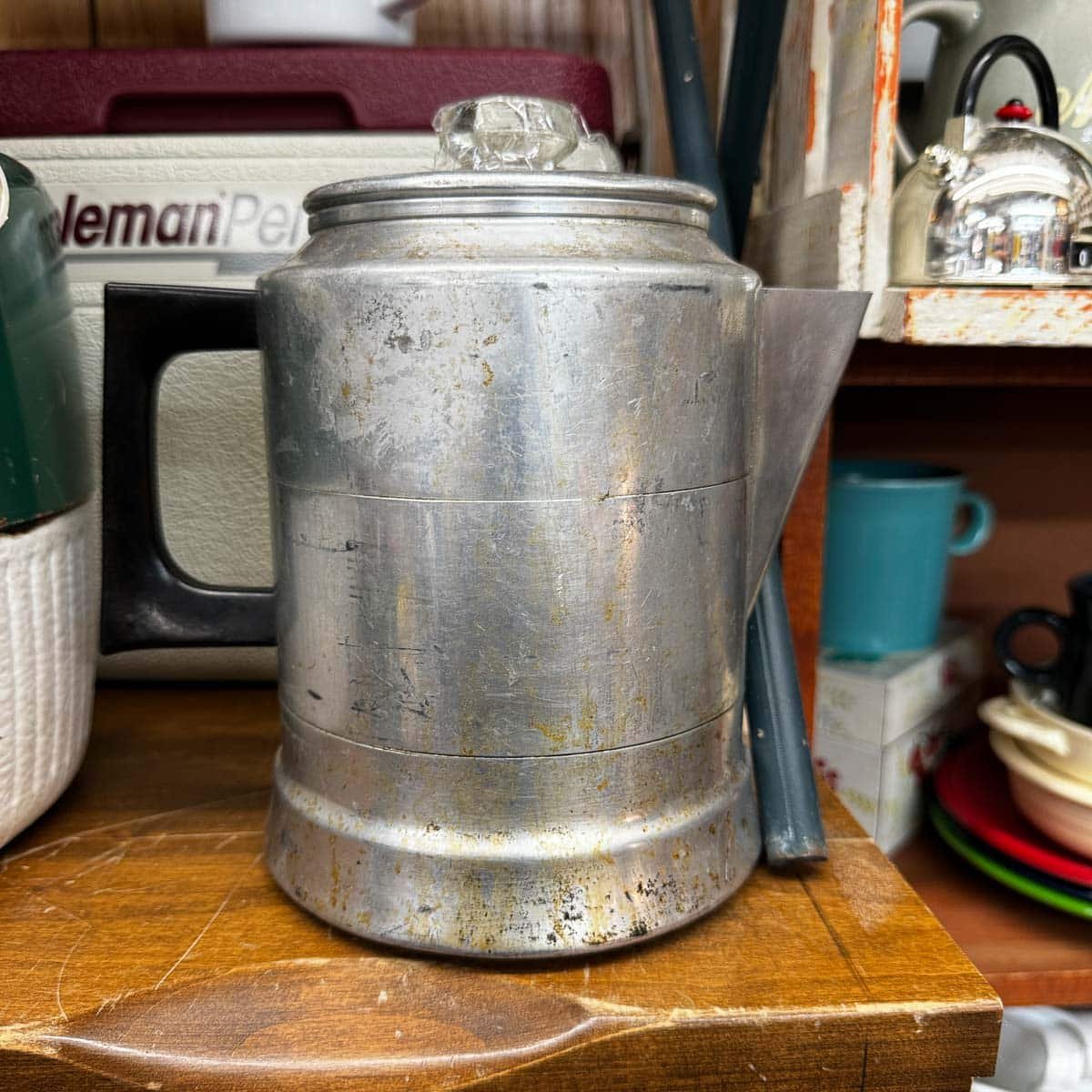
A percolator consists of a bottom chamber for water, a metal tube rising up the center, a perforated basket for the coffee grounds, and a glass knob on top through which you can see the "perk" in action. As the water boils, steam pressure repeatedly pushes it up the tube and over the coffee grounds, extracting more and more flavor each time.
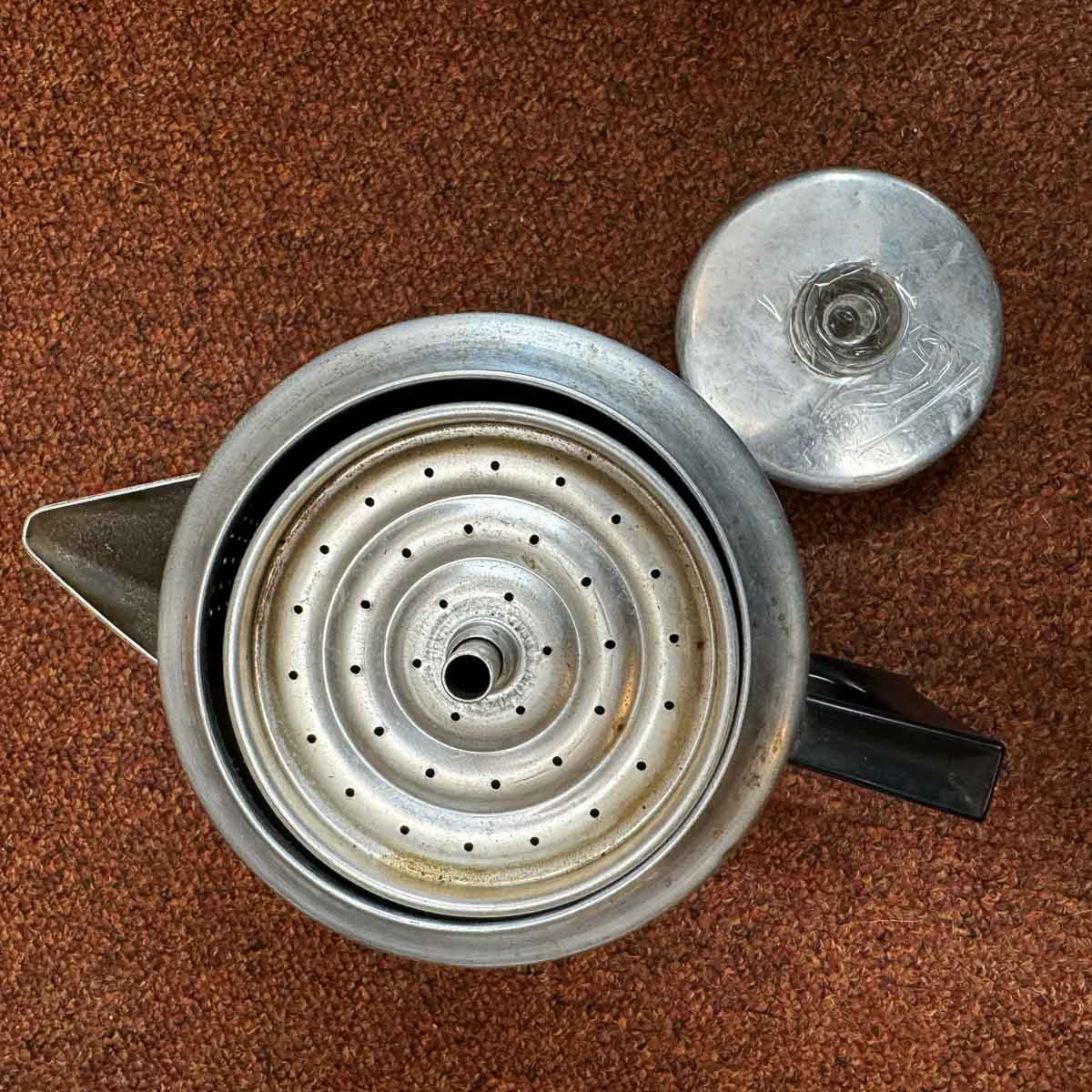
The resulting cup of coffee tends to be full-bodied and strong, though critics often find that it over-extracts the flavor of the beans, resulting in a bitter taste.
Old-Fashioned Tins And Spice Tins
Unlike today's plastic kitchenware, these eye-catching tins featuring bold colors and fonts once lined pantry shelves and kitchen counters across America. Kitchen staples like spices, extracts, and cooking powder were kept fresh by decorative, yet practical tins that could be repurposed or refilled. Even the most mundane of ingredients were packaged with both design and function in mind.
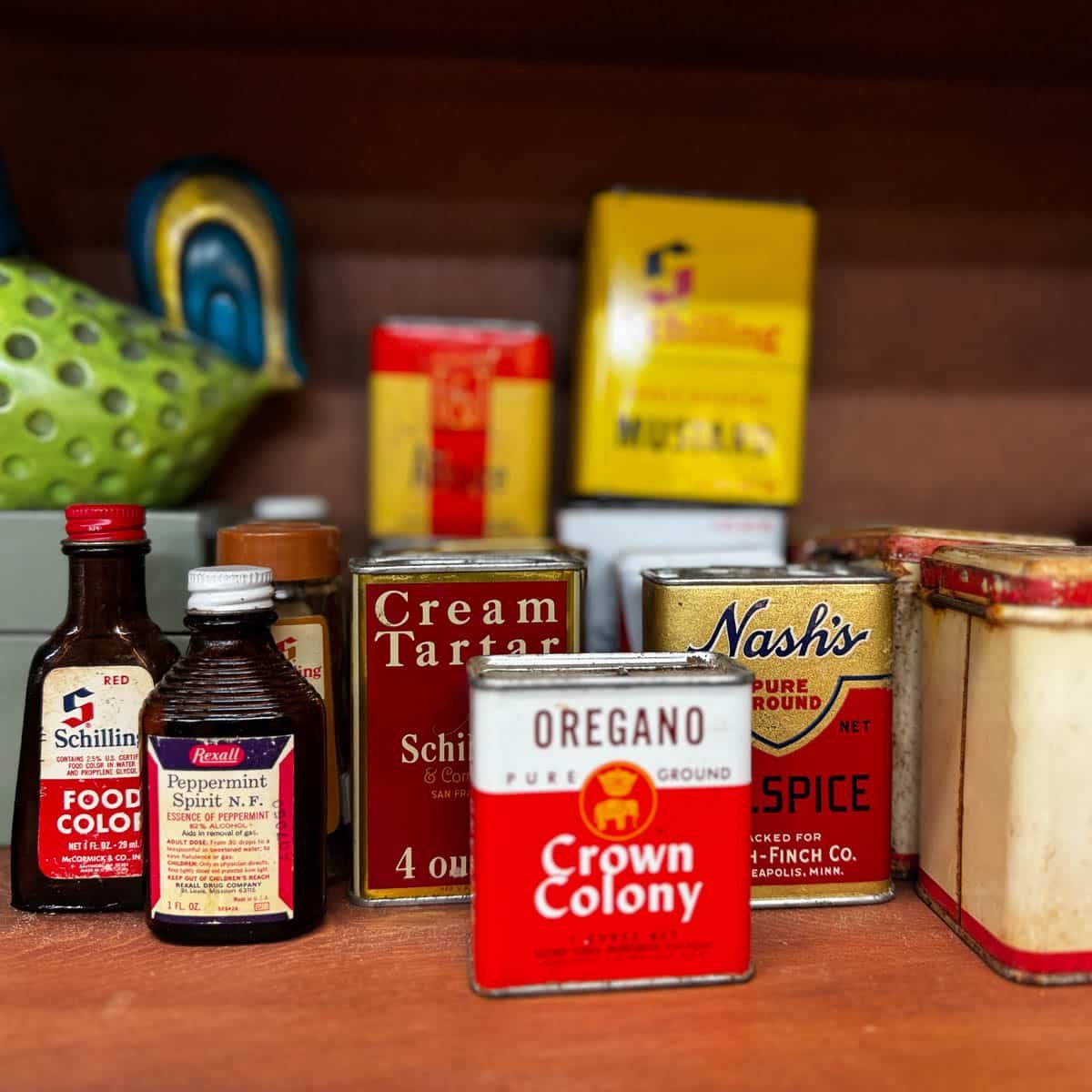
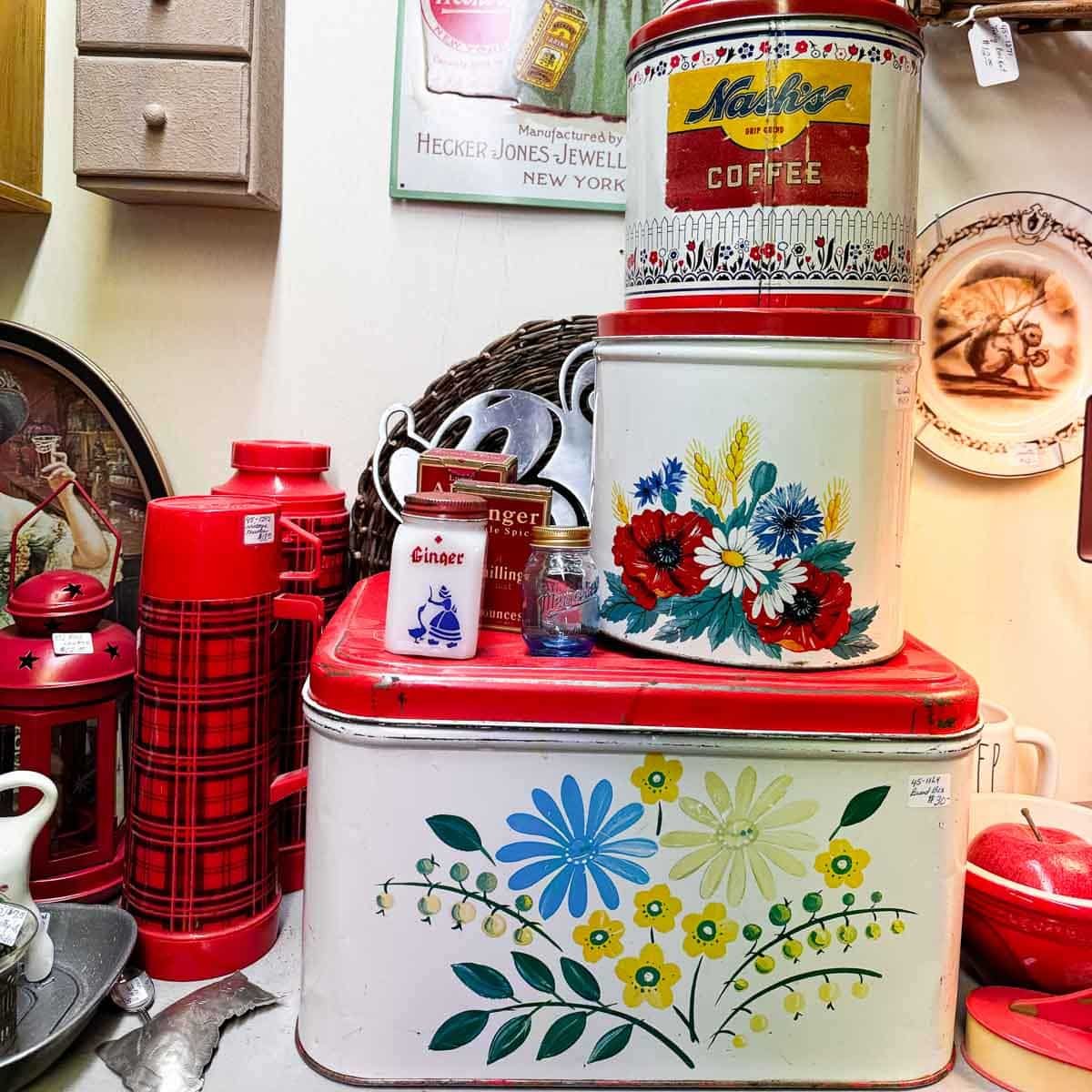
Stackable tin canisters were used for storing dry goods such as flour, coffee, cookies, and more. These canisters were sold as sets and often featured floral or folk art motifs, especially in the '50s and '60s. They served as both a practical way to store things in bulk, as well as a way to add a bit of color and charm to brighten up the kitchen.
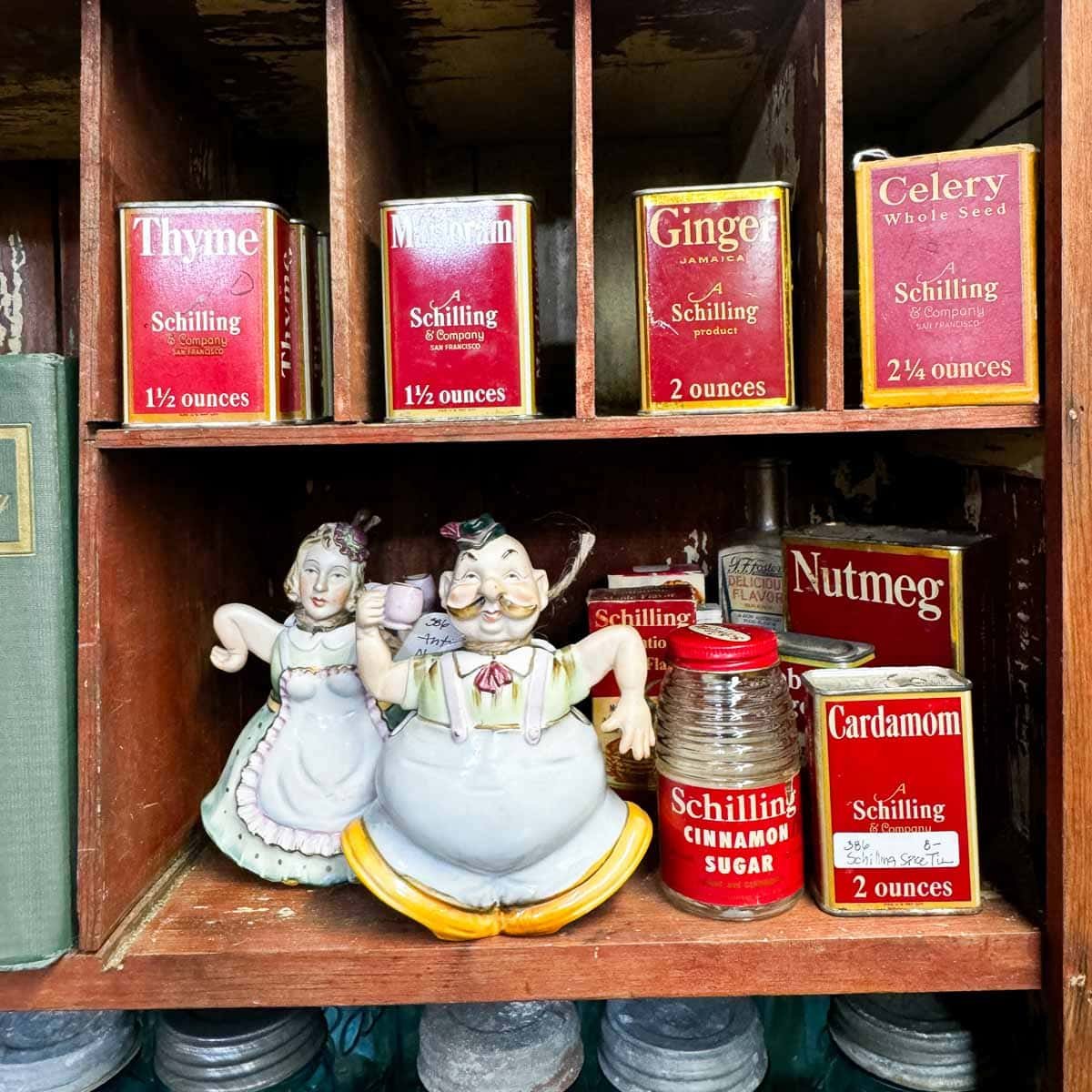
Vintage Can Openers
The evolution of the can opener is fascinating, from crude manual devices to sleek mid-century electric innovations.
The simplest design is the classic "church key" can opener. These manual can openers were popular as far back as the 1920s. The pointed "key" would be used to pierce a hole in the top of canned goods such as condensed milk, juice, and even beer before pull-tabs were commonplace.
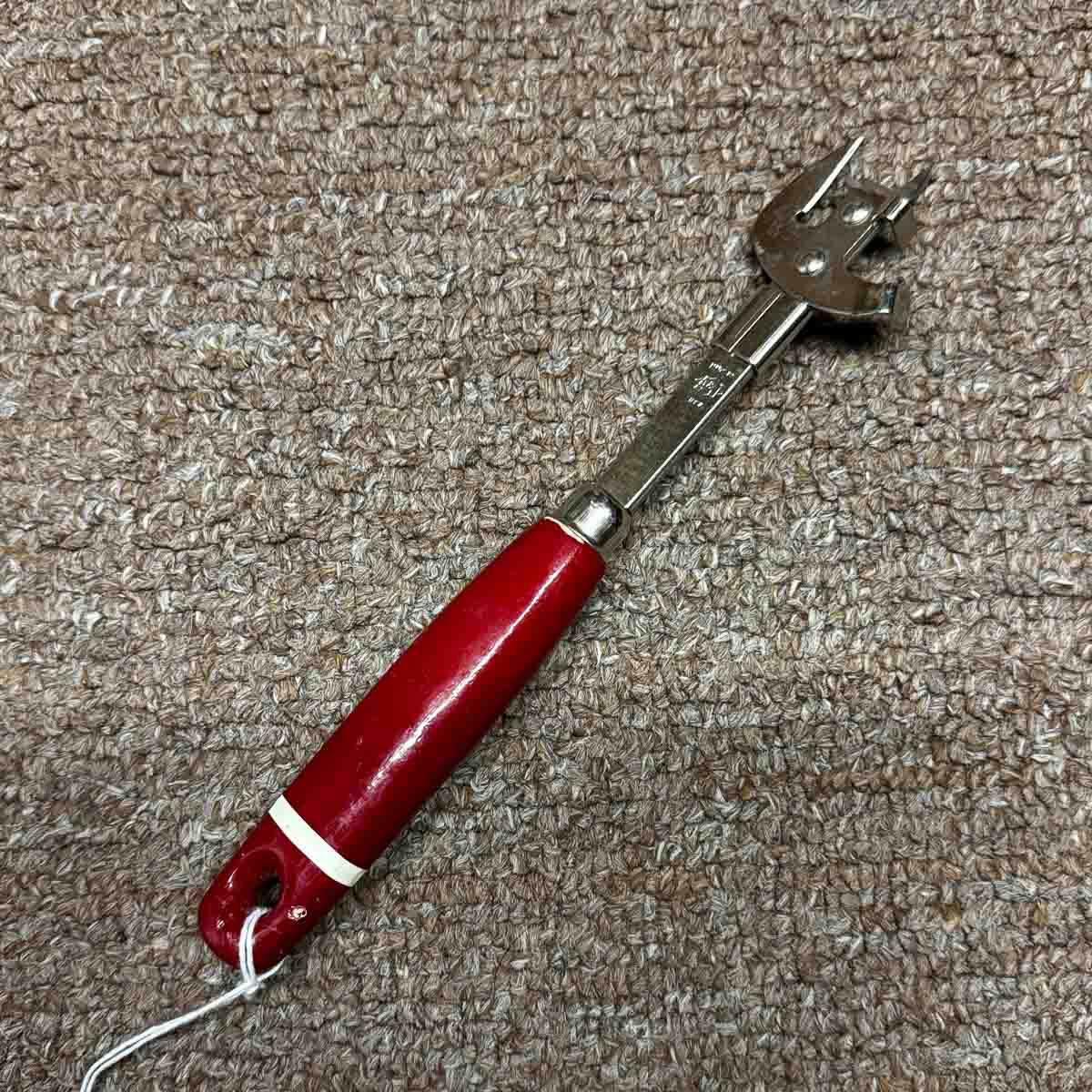
Wall-mounted can openers were often used in diners or kitchens that prepared a lot of food in bulk. They were made to last, could open large cans quickly and smoothly, and could also be attached to countertops and kitchen cabinets.
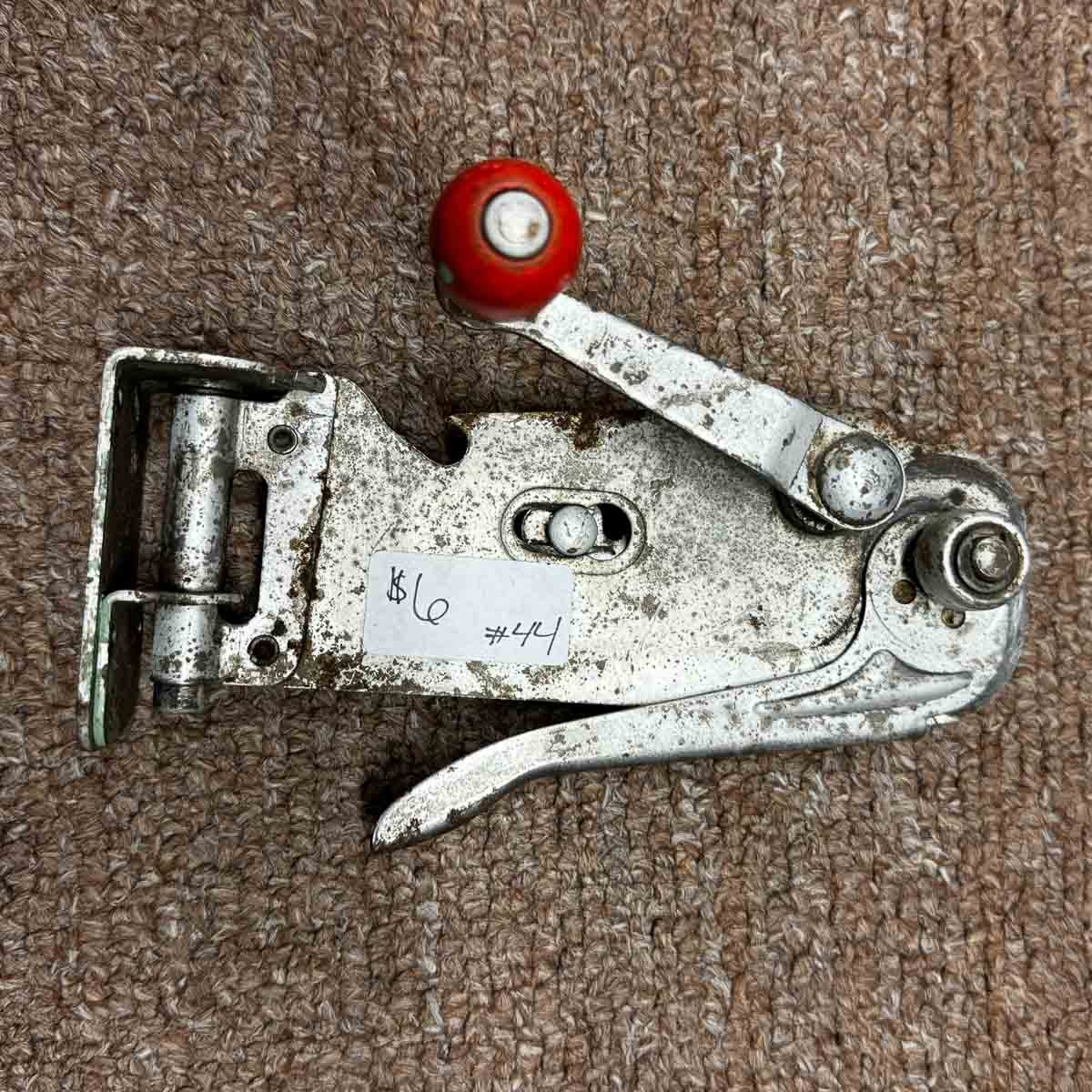
As you may have guessed from the classic retro look, the pictured General Electric can opener likely dates back to the 1960s-70s and reflects the mid-century shift towards automation and convenience. Much like today's electric can openers, these retro models offered features such as automatic shut-off and hands-free operation.
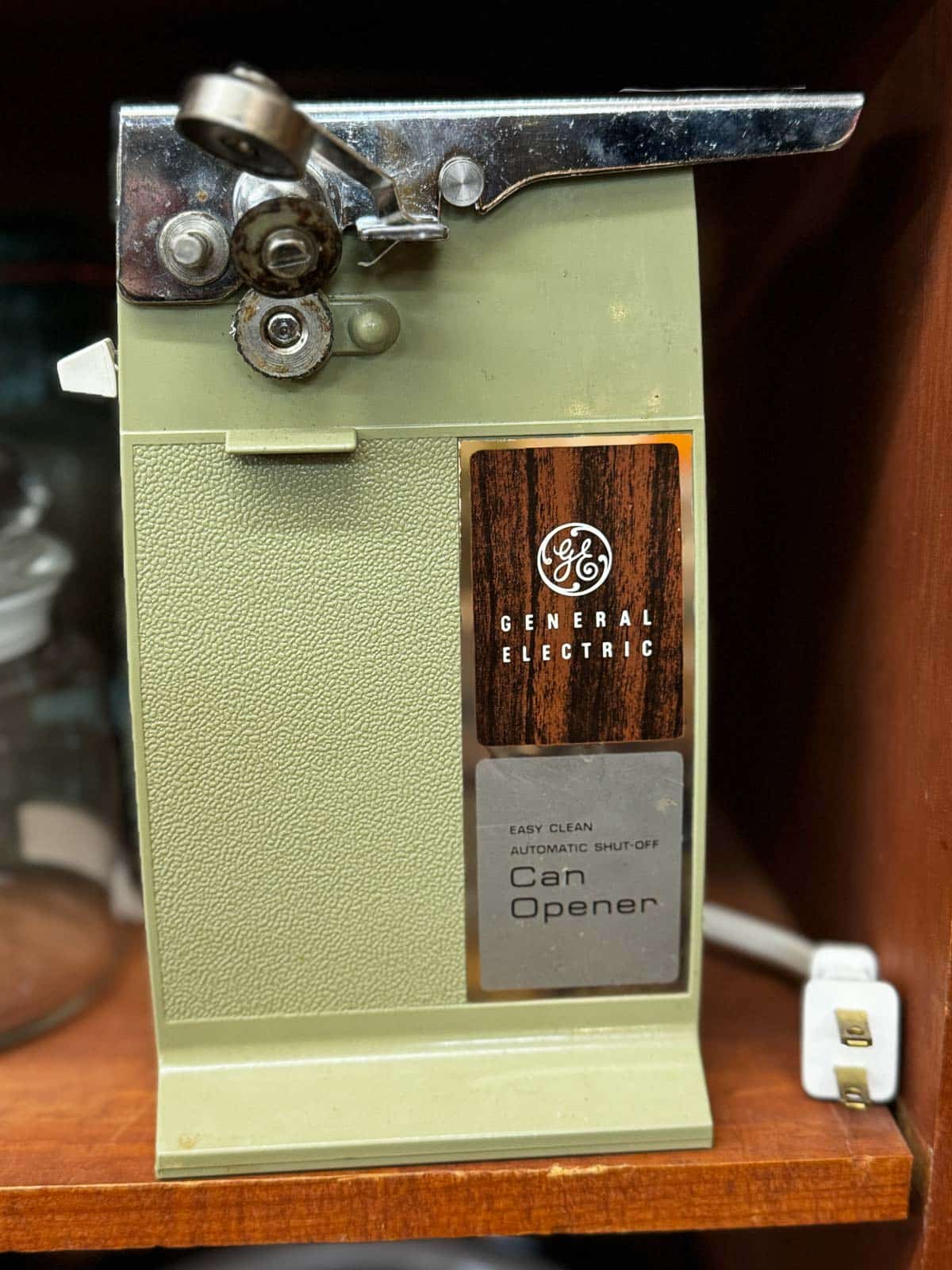
Pancake Makers
Pancake makers, sometimes called "pancake irons", are beautiful and unique artifacts from cooking history! They were typically made from cast iron and often featured intricate designs reminiscent of Scandinavian rosemaling and European folk art.
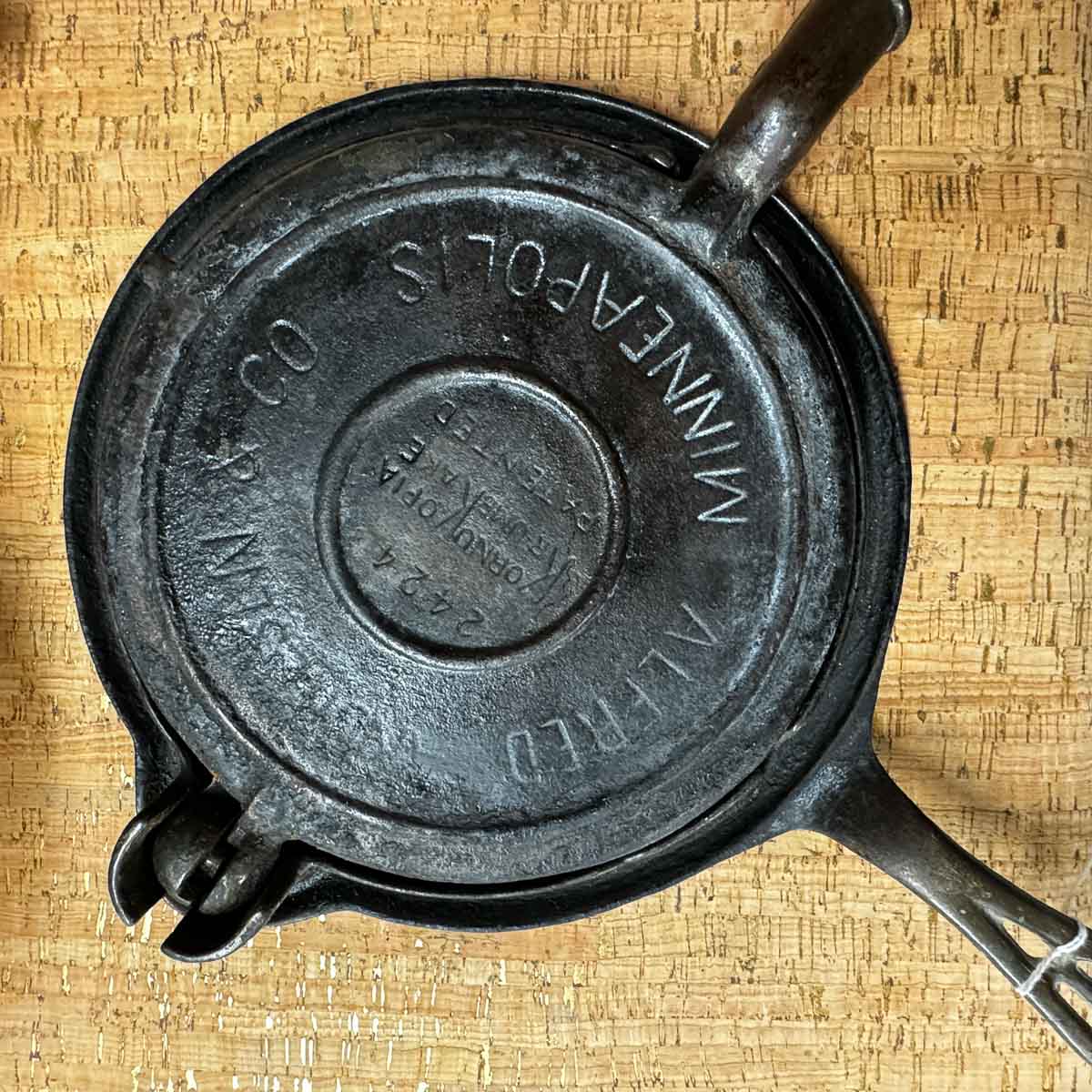
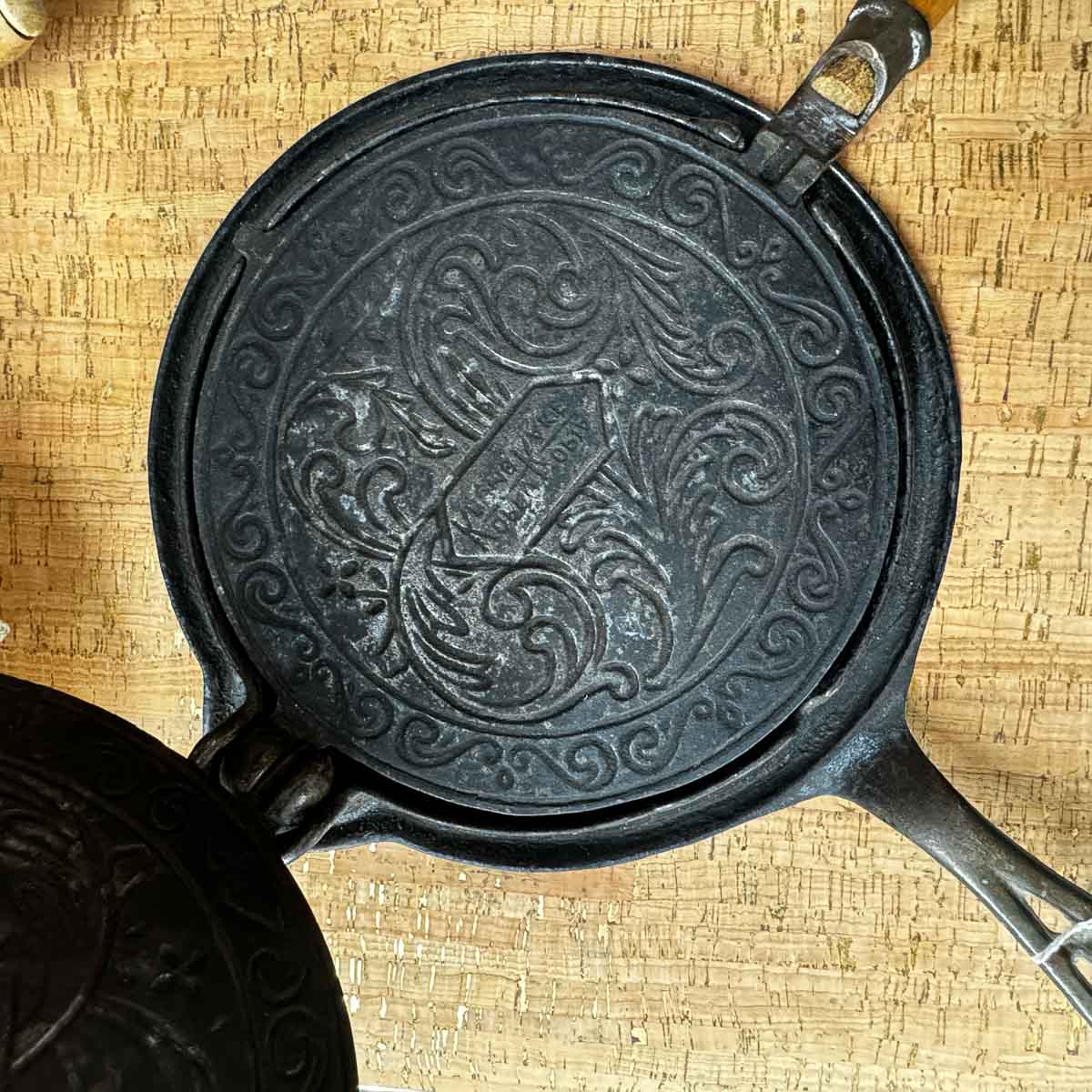
Pancake irons like this one were widely used as far back as the 1890s! These stovetop hinged presses were used to make thin, crepe-like European-style pancakes, like an elevated version of these German pfannkuchen. They were also used to make pizzelle cookies!
Sponge Cake Slicer
This interesting piece of equipment may look intimidating, but it's actually a vintage sponge cake slicer, sometimes called a "cake comb" or "cake leveler".

The metal prongs were designed to glide cleanly through airy cake layers without tearing or crushing them, ensuring a uniform cut. These tools were especially common in European and American homes and bakeries.
Flour Sifter
Old-fashioned flour sifters are classic kitchen tools used to aerate and remove lumps from flour, as well as to evenly mix dry ingredients like baking powder, salt, or cocoa powder. They're prized for their durability, simplicity, and charm.
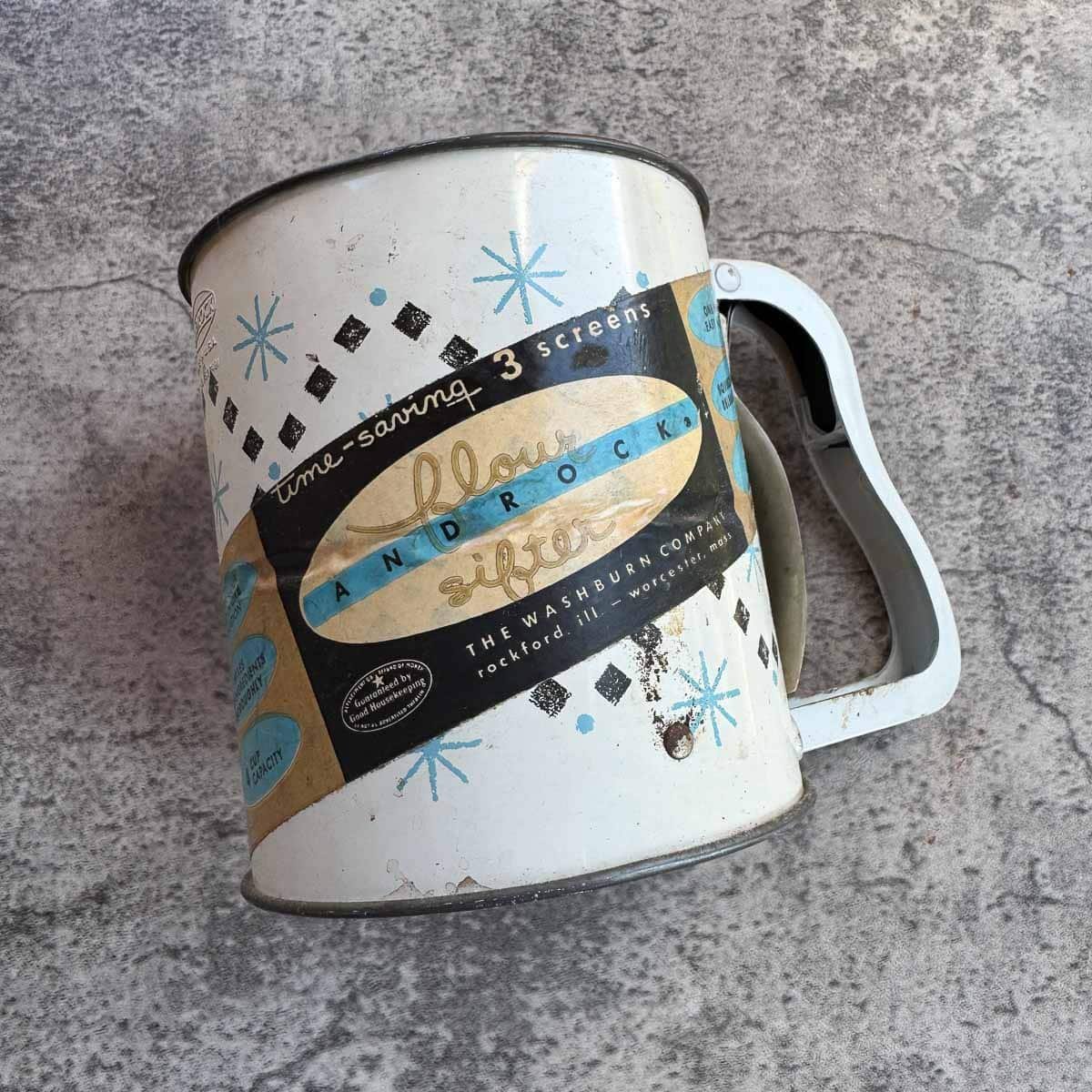
Some had crank handles that rotated the blade inside, which forced the flour through a fine mesh screen. The one pictured has a squeeze-handle trigger. Squeezing the handle activated internal blades or agitators that pushed the flour through the mesh.
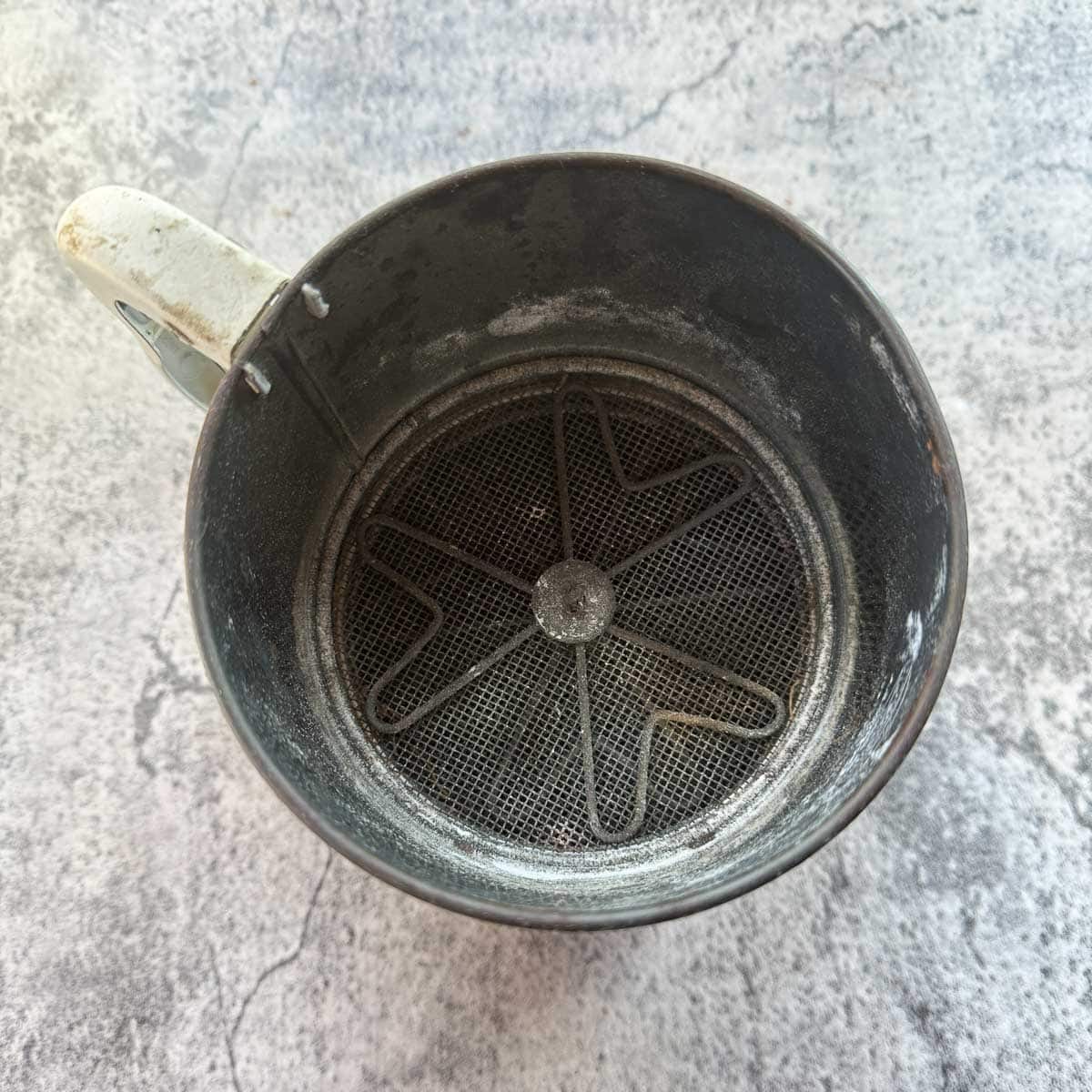
I hope this post provided a nostalgic walk down memory lane or broadened your culinary knowledge! If nothing else, I hope the next time you find yourself in an antique shop, you can show off your knowledge of retro kitchen accessories and devices!
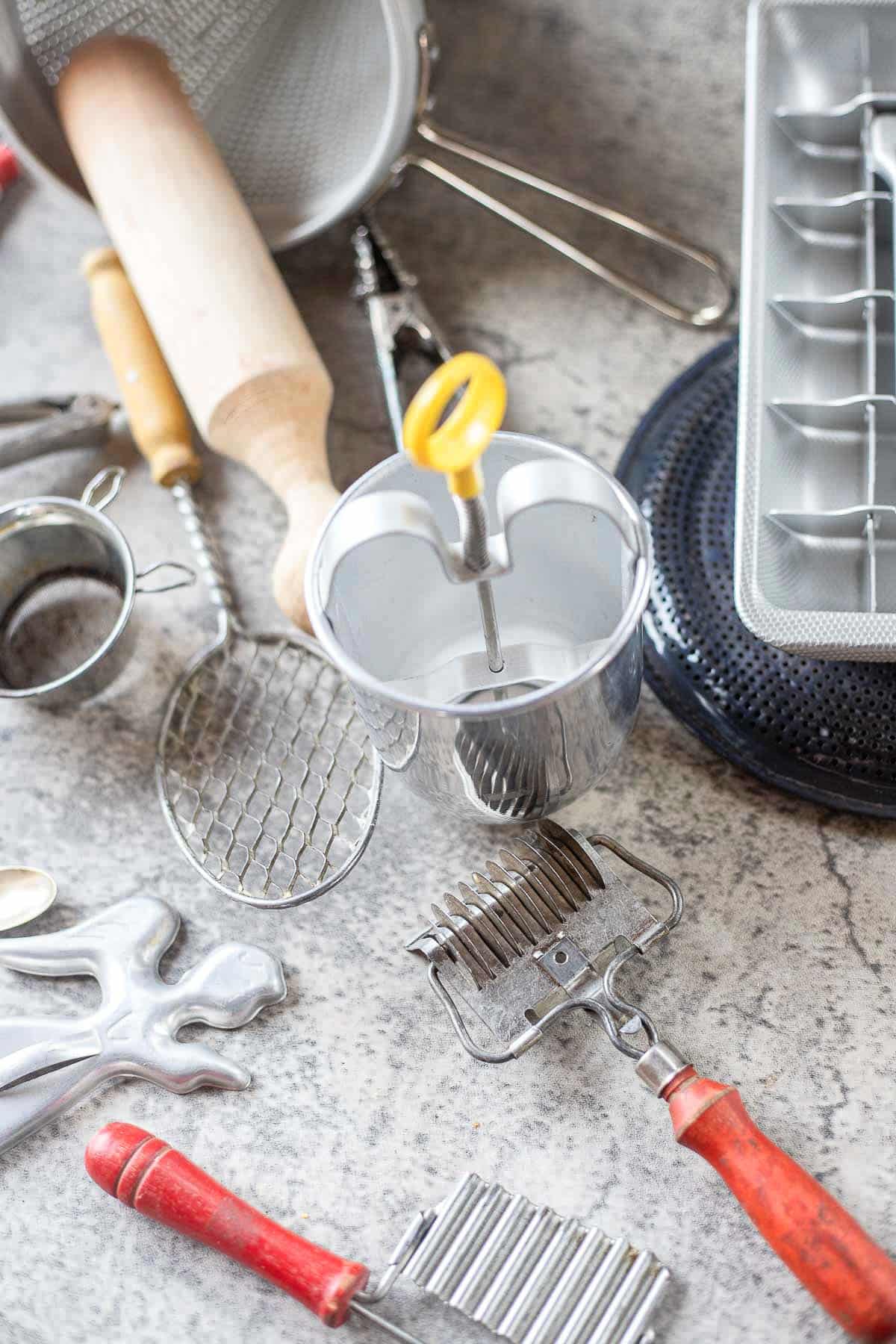

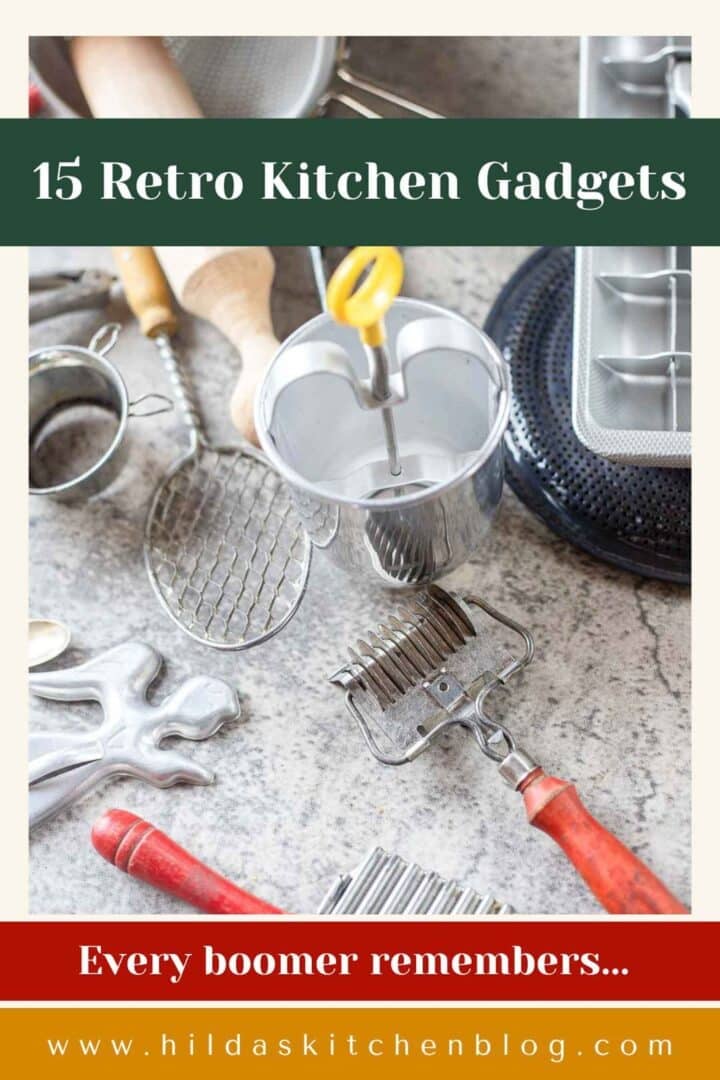
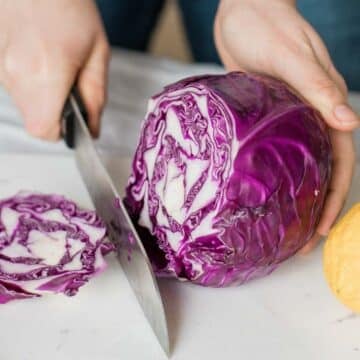
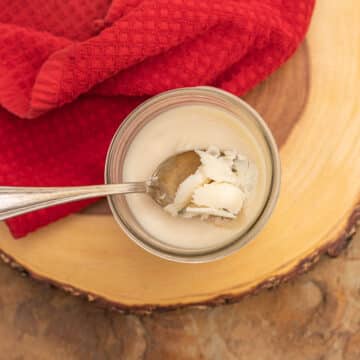

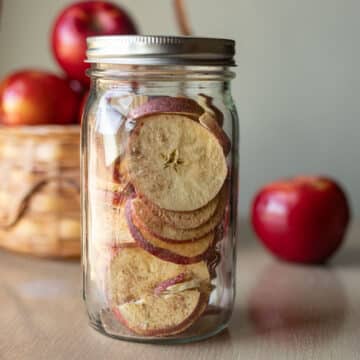
Kathy Fisher says
Those pancake makers... I had our family krumkaka iron that was used for generations - made in MN. Scandinavian immigrants gravitated toward MN along with our family. My cousin Leslie probably still makes them.
Hilda Sterner says
And I bet they were delicious!
Betsy Timm says
What fun! My parents had many of these, but those toasters were very retro.
Wasn’t there another hand-held nut chopper that worked like a rocking horse?
Hilda Sterner says
Hi Betsy, It's funny you should mention that chopper because we had one of those that we considered adding to this post.